Keto Diet and Elevated Liver Enzymes
This Paleolithic ketogenic diet guide (a.k.a. paleo guide to ketosis) contains everything you need to know about this ancient low-carb high-fat diet, including health benefits, tips, supplements, meals, and scientific research to get you started on a path to better health.
I'll also cover some of the potential issues associated with long-term keto diets and explain why I decided (after two years of doing keto) to re-introduce more carbohydrates.
A ketogenic paleo, Paleolithic ketogenic diet, keto+ or keto-paleo diet is a low-carb high-fat diet (sometimes also referred to as an LCHF diet) that has numerous scientifically-proven health benefits. Knowledgeable dietitians often recommend a keto or paleo diet to patients who are trying to lose weight or burn body fat, and doctors use it to treat Type 2 diabetes and numerous other chronic diseases.
Over the past few years, the keto and paleo diets have been the focus of attention for many dieters seeking to achieve faster weight loss and/or healthier overall living. And while these two diets are similar in many ways, they also have significant differences — both in terms of purpose and application.
However, instead of choosing one or the other, I encourage you to embrace both concepts simultaneously and reap the benefits of each — especially if you're dealing with chronic health issues.
Unlike most other keto or paleo resources you'll find online, this ultimate beginner's guide focuses on the combination of the two diets — or what I call the ketogenic paleo diet. Perfect Keto calls it the keto+ diet. Compared to the standard ketogenic diet, the ketogenic paleo diet is centered around the foods that Homo sapiens have eaten for millions of years as part of human evolution.
Since the standard keto diet is so similar to the keto-paleo diet, I'll refer to both simply as the ketogenic or keto diet throughout this article. However, I'll point out any differences between keto, paleo and ketogenic paleo, where applicable.
I had been on a low-carb high-fat paleo diet for years before I decided to switch to a full ketogenic paleo diet. Throughout this review, I weave in my personal experience, struggles and success stories so that you can avoid the mistakes I made.
Nutrition isn't the only factor that influences our health and wellbeing. Learn more about all five factors you need to pay attention to.
What Is a Keto Diet?
The goal of a ketogenic diet is to allow your body to use fat instead of carbohydrates as its primary source of energy. This metabolic process — during which the body utilizes a chemical substance called ketone bodies for fuel, as opposed to glucose — is known as nutritional ketosis.
Ketosis is an entirely natural process that our bodies are used to from the time we're born. In fact, newborn infants turn on ketosis only hours after birth, and they usually remain in ketosis until after being weaned from the breast.
Ketones are an essential fuel for the human neonatal brain because there is insufficient glucose available to meet its brain energy requirements.
National Institute of Health
So as you can see, the human body is fully adapted for a ketogenic lifestyle. It's only when we start introducing carbohydrates that our metabolism changes.
Types of Keto Diets
There are numerous variations of the keto diet, and they differ in their macronutrient makeup. Some of the more popular varieties are listed below:
- Cyclical Ketogenic Diet (CDK)
- Standard Ketogenic Diet (SDK)
- Targeted Ketogenic Diet (TKD)
- High-Protein Ketogenic Diet (HPKD)
Cyclical Ketogenic Diet (CDK)
A cyclical or cyclic ketogenic diet is designed primarily for bodybuilders and involves a weekly rotation of carb intake. For example, you could go on a keto-style low-carb diet for four days and then consume a relatively high amount of carbs for the next three days.
Standard Ketogenic Diet (SDK)
A standard keto diet is usually practiced by those who are looking to shed some pounds but who are less active than bodybuilders or competitive athletes. On an SDK, meals are structured in such a way that they contain 75% fat, 20% protein, and only 5% carbs. This reduces daily intake to about 20 to 50 grams of carbohydrates.
Targeted Ketogenic Diet (TKD)
This type of keto diet is recommended for people who participate in high-intensity activities. Athletes on the TKD consume a high amount of carbs (usually within the range of 25 to 50 grams) just before a workout, and then burn those excess calories during exercise.
High-Protein Ketogenic Diet (HPKD)
Like the SKD, this involves rotating your carb intake weekly. However, in this case, the ratio of protein is slightly higher (35%), with carbs still representing 5% and fat intake reduced to about 60%.
Who Invented the Keto Diet?
While some people think ketogenic eating is yet another fad diet based on a novel but unproven concept, this high-fat low-carb diet is actually based on the lifestyle that our ancestors lived for millions of years.
Early Homo sapiens didn't choose any particular diet. Ketogenic eating and paleo eating were simply the results of the available food sources at the time. Paleolithic humans were hunter gatherers, and during periods of intermittent fasting (which occurred due to food scarcity), their bodies would automatically transition into ketosis and use fat for energy once all their glycogen reserves had been depleted.
Beyond intermittent fasting, climate and seasons also played a role in the foods our ancestors could find and eat. We can only assume that in colder climates or during winter, animals (and in particular, animal fat) were the primary food source comprising the hunter-gatherer diet. You can read more about that below, when we discuss how long you can sustain a keto diet.
In the early 20th Century, the ketogenic diet gained popularity as a treatment for seizures in children, particularly in cases where anti-seizure medications were ineffective (such as drug-resistant epilepsy). Only in recent years have people started to pay close attention to its numerous short-term and long-term health benefits.
What Does "Keto" Mean?
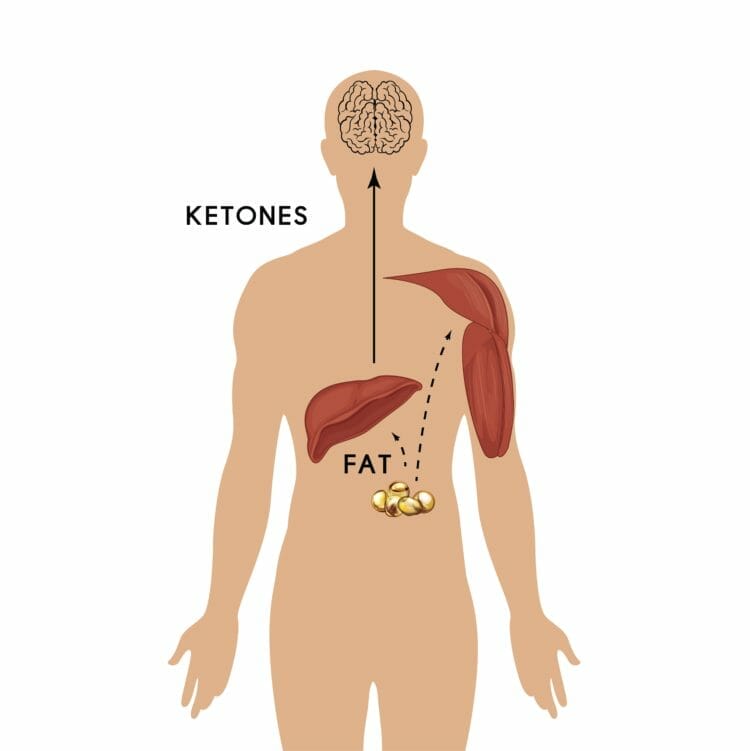
The term "keto" is derived from the word ketones, which are small chemical compounds that the human body can use for energy. Some medical professionals have labeled ketones an alternative fuel source to glucose.
The body can make glucose from protein in a process called gluconeogenesis.
Your body uses ketones any time blood sugar (glucose) is in short supply. That means your liver produces ketones from fat if you consume only small amounts of carbohydrates and moderate amounts of protein.
One of the quickest ways to enter and reap the benefits of ketosis (the metabolic state during which your body uses ketone bodies primarily as fuel) is intermittent fasting. During fasting, your body uses all the available glycogen reserves stored in your liver and muscle tissue, and then begins the process of converting fat to energy.
Your brain is a significant consumer of ketones and thrives on this form of energy.
Your body's ability to burn fat for energy is why the low-carb ketogenic diet is so useful for losing weight — especially when combined with intermittent fasting. But as you'll discover by reading the rest of this guide, short-term and long-term weight loss are just a couple of the many benefits of ketosis.
What Is a Paleo Diet?
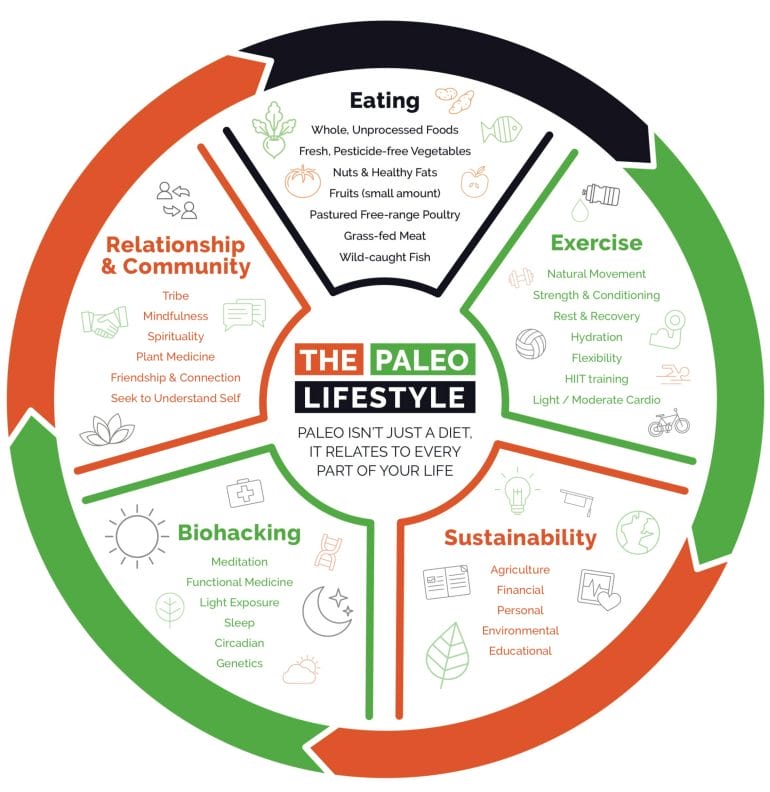
According to Dr. Loren Cordain, Ph.D., the Paleolithic diet — also sometimes called the caveman diet or the hunter-gatherer diet — is based upon modern, everyday foods thatmimic the food groups of our pre-agricultural, hunter-gatherer ancestors who lived from about 2.6 million years ago up until around 8,000 B.C.
What's important to understand is that there are numerous variations of the Paleolithic diet. That's because the food sources of Paleolithic humans varied depending upon where they lived. For example, Paleolithic people who lived near the water likely had access to more seafood and fish than those who lived inland.
Despite those variations, the foundational concept of the diet is consistent: there's absolutely no way you can picture hunter-gatherers in the Paleolithic era with abdominal obesity and metabolic issues. They lived long before the advent of agriculture, so if they didn't want to die from starvation they needed to work to find their food. You know, by actually hunting and gathering.
Equally important as their level of physical activity was the fact that they ate the food that was available to them (which is what the human body evolved to thrive on). Their diet was based on biological needs — nothing more and nothing less.
That's why the modern paleo diet includes foods with high protein content and low carbohydrates. It's primarily focused on grass-fed meat and organs. It allows seafood, eggs, fruits, vegetables, nuts and seeds. In other words, all the things our Paleolithic ancestors consumed.
Based on my research and what I know from modern hunter-gatherer tribes, such as the Hadza, early humans primarily consumed animals, seasonal (sweet) fruits and honey. Additionally, I know now about the chemical defense mechanisms of plants and generally avoid nuts, seeds and most other veggies. (You can read more about that in this article.) While some of that doesn't reflect what most people consider a modern paleo diet, I think it more closely represents how humans have eaten throughout evolution.
Of course, sometimes they couldn't find those things. In the winter and spring, fresh fruits and starchy vegetables may have been in low supply or completely unavailable — leading to a reduction in their already low carb intake. And sometimes, they couldn't find food at all for a day or more at a time.
If you're thinking to yourself, that sounds a little bit like the keto diet you described above… you're right. The ketogenic process is baked into our evolutionary framework, right alongside intermittent fasting.
In a nutshell, paleo eating constitutes a diet that's low in carbs, high in omega-3 fatty acids, and which eliminates things from our diet that our ancestors had limited or no access to — things like processed foods, refined foods (and especially refined sugar), grains and legumes, and dairy products.
Aside from a general and overall improvement in health and well-being, some of the noted specific benefits of a paleo lifestyle are weight loss, improved insulin sensitivity, and a reduction in the risk of cardiovascular diseases.
Types of Modern Paleo Diets
If you've done some research, you've likely stumbled across different types of paleo diets or ancestral eating strategies. Keto is obviously one of them, but there are a few others that I'd like to quickly point out.
Animal-Based Diet
An animal-based diet is centered around meat, fat and organs of ruminant animals. It also allows eggs, raw honey and some of the least-toxic plants, including avocados, olives, deseeded squash and cucumbers, as well as seasonal fruits.
| Eat | Avoid |
| Grass-fed meat and organs | Gluten |
| Animal fats | Grains and corn |
| Seafood | Legumes |
| Eggs | Most plants (i.e.m veggies) |
| Squashes (e.g., zuchini) | Sugar |
| Seasonal (sweet) fruits | Alcohol |
| Raw honey | Soy |
| Raw dairy | Junk food |
| Salt |
Carnivore Diet
The carnivore diet is centered around red meat, eggs and certain dairy products.
| Eat | Avoid |
| Red meat | Everything else |
| Animal fats | |
| Eggs | |
| Dairy (i.e., cheese) | |
| Salt |
Whole30 — When in Doubt, Leave It Out. It's Only 30 Days
The goal of Whole30 is to eliminate the most common inflammatory foods for 30 days.
| Eat | Avoid |
| Veggies | Gluten |
| Unprocessed meats | Grains and corn |
| Seafood | Legumes |
| Eggs | Dairy |
| Natural fats | Sugar |
| Herbs and seasonings | Alcohol |
| Fruit | Soy |
| Junk food |
Primal — Quality Over Quantity
Primal eating focuses on fruits, veggies, raw dairy and healthy fats.
| Eat | Avoid |
| Grass-fed meat | Gluten |
| Fish and seafood | Grains and corn |
| Fresh fruits and veggies | Legumes |
| Eggs | Refined sugars |
| Nuts and seeds | Alcohol |
| Raw dairy | Soy |
| Healthy oils | Vegetable oils |
| Maple syrup | Processed foods |
| Raw honey | |
| Complex carbs |
Autoimmune Protocol (AIP) — Anti-Inflammatory Approach
AIP is a specialized paleo diet with strict guidelines to fight autoimmune diseases.
| Eat | Avoid |
| Grass-fed meat | Gluten |
| Wild-caught fish | Grains and corn |
| Seafood | Legumes |
| Most veggies | Dairy and eggs |
| Minimal fruit | Nightshades (e.g., tomatoes, peppers) |
| Fermented foods | Nuts and seeds |
| Coconut milk | Additives |
| Non-dairy fats |
Bulletproof — Fuel Your Body, Feed Your Brain
The Bulletproof diet is relatively similar to the traditional keto diet, and its goal is to reduce toxic, health-sapping foods and to optimize your performance with healthy fats.
| Eat | Avoid |
| Buttered coffee | Gluten |
| Grass-fed meat | Grains and corn |
| Wild-caught fish | Legumes |
| Seafood | Diary |
| Organic veggies | Refined sugars |
| Nuts and seeds | Additives |
| Some fruit/starch | Refined vegetable oils |
| Quality oils/fats |
HCG — Lose Weight From Fat, Not Muscle
The HCG diet can supposedly help women and men lose weight quickly, particularly those with hormonal issues. However, I have not seen much scientific evidence to back up those claims. Still, I decided to mention HCG here for reference.
| Eat | Avoid |
| 500 cal/day | Eating more than 500 cal/day |
| 200 grams of lean protein (meat and seafood) | |
| Two cups of veggies | |
| Limited fruit | |
| Limited stevia |
What Makes Food Paleo?
Below are the basic principles of modern, paleo-friendly food. As you can see, most of these characteristics also apply to a ketogenic diet.
- Higher protein intake
- Lower carbohydrate intake and lower glycemic index
- Moderate to higher fat intake dominated by saturated and monounsaturated and with balanced omega-3 and omega-6 fats
- Higher potassium and lower sodium intake
- Net dietary alkaline load that balances the dietary acid
- Higher intake of antioxidants, minerals and vitamins, and plant phytochemicals
Arguments for the Paleo Diet
According to a study from 2011 titled "Stature and robusticity during the agricultural transition," early farmers were sicker and shorter than their forager ancestors.
The premise of the modern paleo diet is to mimic the dietary habits that existed prior to the agricultural transition in order to reduce your risk of chronic disease, help you lose weight, and optimize your overall health and well-being.
Foods to Eat on a Ketogenic Paleo Diet
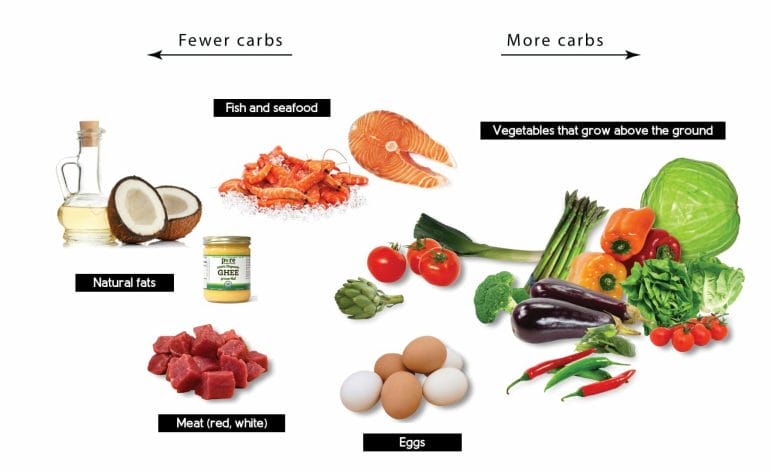
Many people think that a ketogenic paleo diet is incredibly restrictive. However, I think that's only true if you're used to a standard American diet (SAD). If you're used to eating healthy based on the principles of the keto or paleo diets, switching to keto-paleo is no big deal — at least it wasn't for me.
In a nutshell, you can eat as many vegetables that grow above ground, as many eggs, and as much natural fat as you like. You can also have moderate amounts of animal protein from meat, poultry, fish and seafood, as well as certain nuts and seeds.
As with the standard paleo diet, you want to stay away from grains, legumes, dairy, sugars and processed carbohydrates.
In addition to the usual suspects, you also want to limit fruits with high sugar content, as well as starchy veggies (which usually grow underground).
While cheese is allowed (and often endorsed) on the traditional keto diet, I highly recommend limiting your intake because of its inflammatory protein (casein-beta A1).
I can only handle dairy in limited amounts. If I consume too much of it, I get a headache.
If you have to consume cheese, I recommend sheep, camel or goat cheese, all of which have the less-inflammatory casein-beta A2 protein.
Top 5 Keto and Paleo-Friendly Foods
1. Healthy Fats
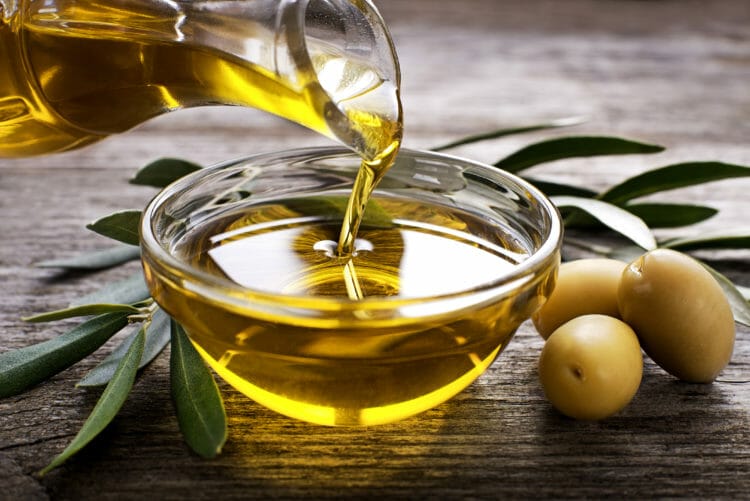
Healthy fats that you can eat as you wish while on a keto diet include olive oil, avocado oil, ghee (clarified butter), coconut oil, lard (pork fat), duck fat, tallow (beef fat) and camel hump fat.
In the Kummer household, we predominantly use tallow (beef fat) and grass-fed butter for cooking and baking.
The yolks of pastured eggs are also an excellent source of fat. Don't worry about their cholesterol — dietary cholesterol doesn't impact your blood cholesterol at all.
2. Protein
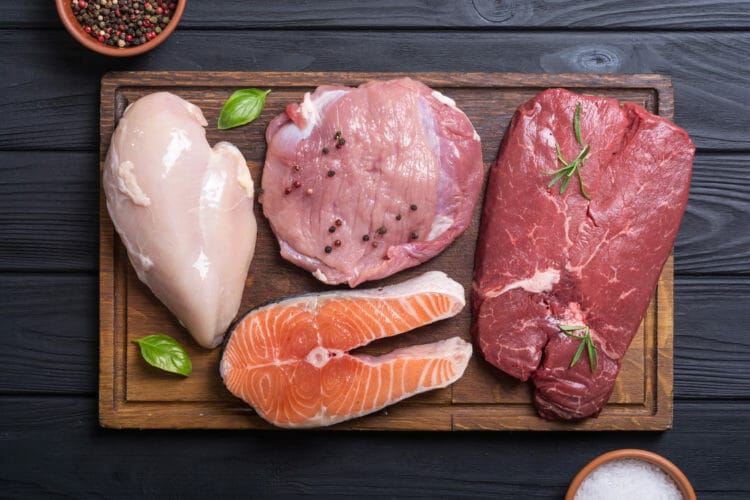
Some "keto experts" recommend consuming protein in moderation because the body can slowly convert it into glucose, which increases your blood sugar levels. However, I haven't seen any scientific evidence to back that up.
Based on my knowledge, gluconeogenesis — the process of converting non-carb food sources into glucose — is mostly demand-driven rather than supply-driven. That means eating more protein doesn't cause your body to make more glucose.
Personally, I eat a lot of protein and never get kicked out of ketosis as a result. Also, if you exercise a lot, make sure to maintain adequate protein intake to allow your muscles to repair and grow.
Here is a link to an excellent video explaining the effect of protein on blood sugar.
The types of protein I recommend include meat, wild-caught fish, and seafood. Try to opt for pastured meat (like grass-fed beef) and wild-caught seafood for optimal health benefits (and to support the environment).
When selecting fish, try to avoid larger fish — such as tuna and mackerel — because they often contain higher levels of mercury. Here's a list of mercury levels in different types of fish. To be on the safe side, stick with fish that have low levels of mercury.
If your local grocery store doesn't carry these types of meat and seafood, I recommend delivery services such as White Oak Pastures* or Butcher Box*. I've tried both and recommend either — their meat and fish is fantastic and reasonably priced!
3. Vegetables That Grow Above the Ground
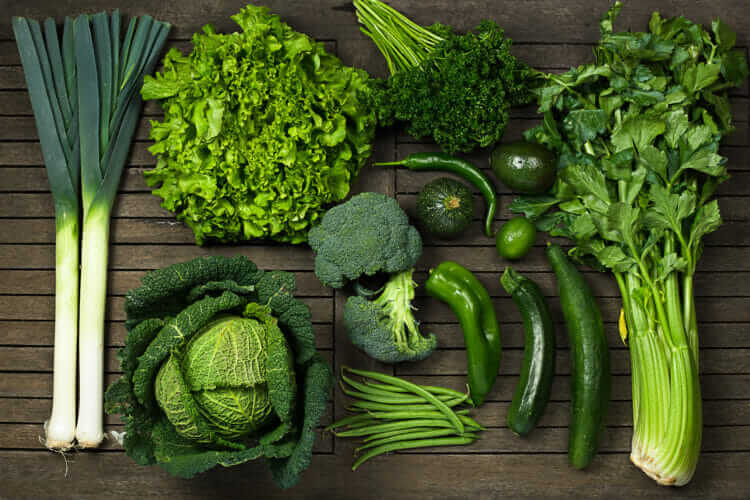
As a rule of thumb, non-starchy vegetables that grow above the ground have fewer grams of carbs per serving than those that grow below the ground. Additionally, green veggies often have fewer total carbs than colorful ones.
The problem is that most veggies have natural defense chemicals that deter animals and humans from eating them. That's why I recommend obtaining your micronutrients from organ meats rather than plants. If organ meats aren't your cup of tea, I recommend freeze-dried organ meat supplements.
The toxicity issues of plants aside, the following veggies are generally considered to be keto-friendly:
- Leafy greens, such as kale, lettuce and spinach
- Cruciferous vegetables (which are also a good source of dietary fiber), such as bok choy, broccoli, Brussels sprouts, cabbage and cauliflower
- Nightshades, such as asparagus, eggplants, peppers and tomatoes
You can learn more about the problems associated with plant-based foods in most post about why I stopped eating (most) veggies.
4. Nuts and Berries
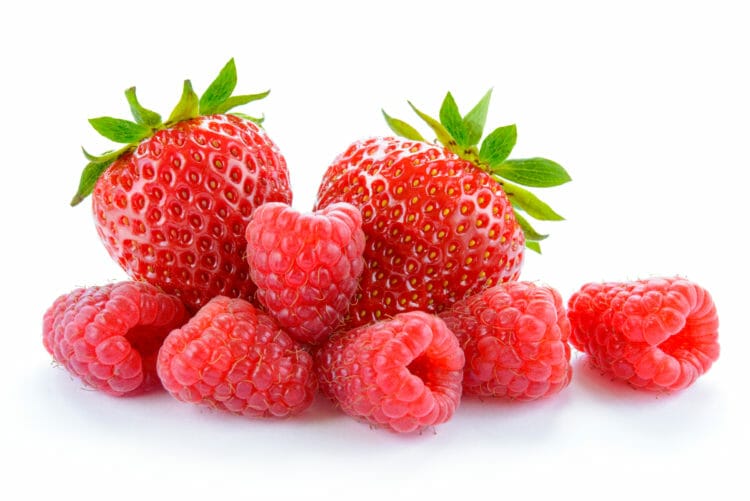
Some nuts and berries have a lot of carbohydrates and sugar. That's why you should limit your intake of those items and stick with low-carb foods such as raspberries, strawberries, pecans, macadamia nuts and Brazil nuts.
Did you know that a tomato is a fruit, not a vegetable?
You know what else are fruits and not vegetables? Avocados and olives! Avocados in particular are a favorite on the keto diet, and I eat them almost every day.
5. Eggs
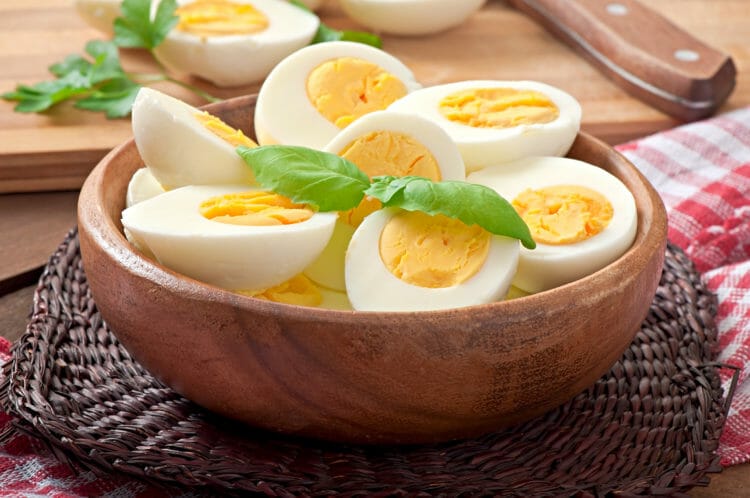
Eggs, and the egg yolk in particular, are an excellent source of micronutrients and good fat. Have you ever seen an egg-white omelet on a breakfast or brunch menu? I don't know why anybody would want to cut out the fat in the yolk.
That's why I occasionally order a yolk-only omelet! Paired with spinach and avocado, it's a perfect keto meal!
Top 4 Foods to Avoid
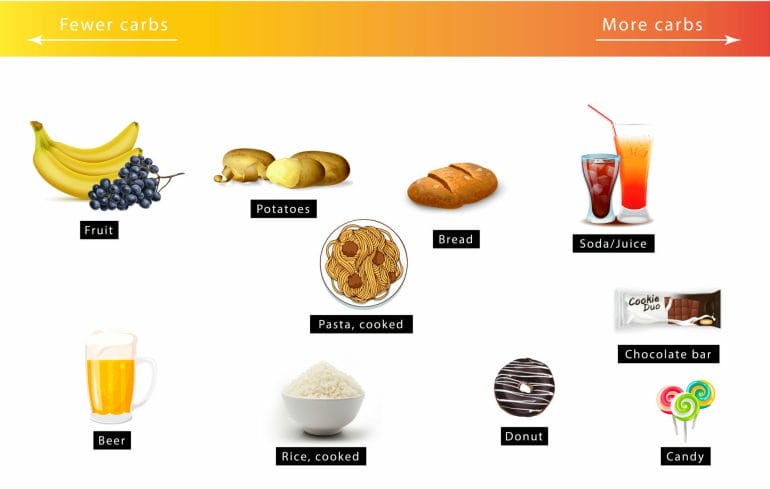
1. Sugar and Polyunsaturated Fatty Acids
I think we can all agree that sugar is bad for your health. As a result, you should stay away from any food that contains high concentrations of this simple carbohydrate.
Besides fruits (see below), that refers mostly to the highly-processed foods that litter the aisles of grocery stores, such as snacks and candies — even the ones labeled as "low-calorie," "zero sugar," or "keto-friendly."
When it comes to processed foods, I look for the "paleo" label and double-check that the product doesn't contain too much natural sweetener (such as maple syrup, honey or dates).
What's much more damaging to your body than the added sugars in highly-processed foods are the polyunsaturated fatty acids (PUFAs) and, in particular, the linoleic acid these foods contain. You can read more about the dangers of PUFAs in this article.
2. Grains and Legumes
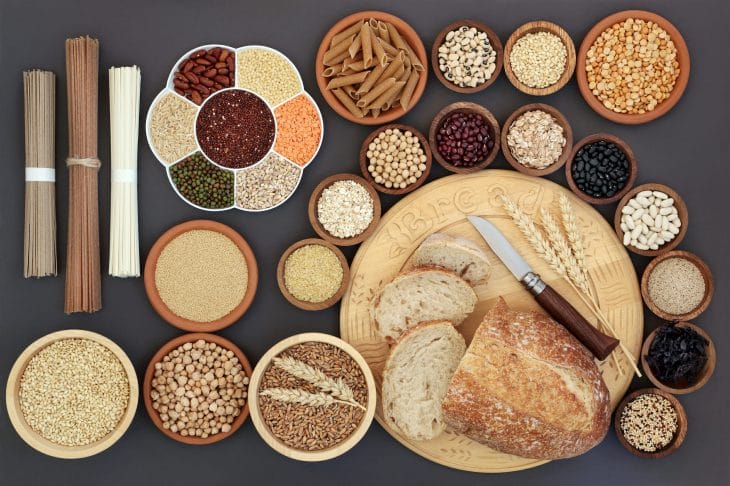
To remain in ketosis, you need to avoid foods that contain large amounts of sugar and starches, such as grains and legumes. Those are typically the ones that also have a high glycemic index (GI).
The glycemic index indicates how quickly a food raises your blood glucose level.
As a result, foods and dishes made from grains, legumes or plain sugar are usually off-limits on the ketogenic paleo diet. Examples include bread, pasta, rice, potatoes and most fruits, as well as sweets like donuts, chocolate bars and other candy.
Except for fruits, the foods I listed above are unhealthy and don't offer any nutritional value. As a result, you shouldn't eat them anyway — regardless of what diet you follow.
In addition to their high amounts of carbs, legumes contain phytic acid, which binds to nutrients in the food, preventing you from absorbing them.
It's important to note that despite their name, peanuts are not actually nuts — they're legumes and contain not only phytic acid but also aflatoxins, which aren't part of the peanut itself; they're produced by a mold that tends to grow on the peanuts' surface. Unfortunately, it's impossible to get rid of those aflatoxins. For these reasons, I recommend staying away from peanuts altogether.
If you're looking for a peanut butter alternative, check out my round-up of the best nut butters for keto. However, please be aware that while they're allowed on most paleo and keto diets, nuts and seeds are rich sources of anti-nutrients and other plant defense chemicals. That's the primary reason why I avoid them entirely.
3. Vegetable Oils

Most vegetable oils are industrial oils that are high in omega-6 fatty acids and require chemicals or high heat for extraction. That damages their fatty acids and makes them highly inflammatory.
As a result, I strongly recommend staying away from the following oils:
- Canola or rapeseed oil
- Corn oil
- Peanut oil
- Safflower oil
- Soybean oil
- Sunflower oil
You can learn more about the dangers of omega-6 and other PUFAs in this article.
In contrast to the oils listed above, olive oil, avocado oil and coconut oil can be easily extracted by pressing and via low heat.
4. Fruits With a High Glycemic Index
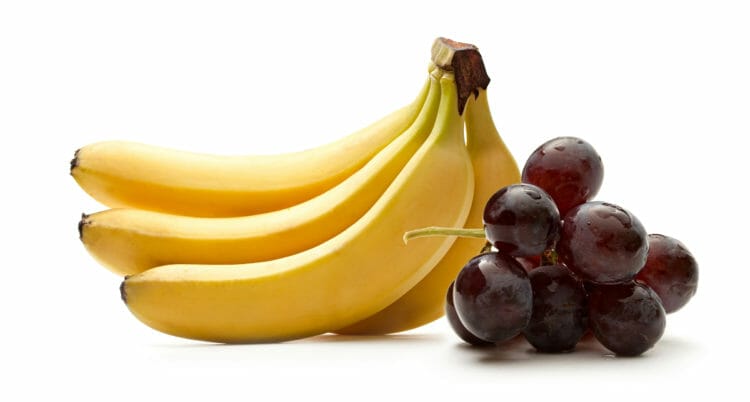
Fruits with a high glycemic index cause a rapid spike in blood sugar levels. That's the primary reason why most keto experts recommend staying away from them.
If you're metabolically healthy, there is no reason to exclude fruits that have a lot of sugar (fructose) unless your goal is to remain is consistent ketosis — something I don't recommend for extended periods as we'll talk about further down.
Fruits with a high GI include:
- Apples
- Bananas
- Grapes
- Kiwis
- Mangos
- Pears
- Pineapples
Note that the traditional paleo diet allows all of these fruits and recommends consuming them in moderation.
I consume a fair amount of bananas, and while doing so might kick me out of ketosis for a few hours, I'm metabolically flexible enough to bounce right back.
Top 4 Foods to Have in Moderation

The goal of any sustainable diet should be to eat a wide variety of nutritious foods. By doing so, you support the diversity of your gut microbiota, and you ensure that your body gets all the micronutrients it needs to thrive.
While I generally avoid nuts and seeds, I do consume some of the other foods in this section in moderation and based on how they make me feel. For example, I can have some A2 dairy, but too much of it gives me headaches. The same principal applies to certain veggies; I do like some chopped onion in guacamole, but too much makes me bloated.
As a result, I don't recommend cutting out the following foods completely. Instead, consume them in moderation based on how they make you feel.
1. Nuts
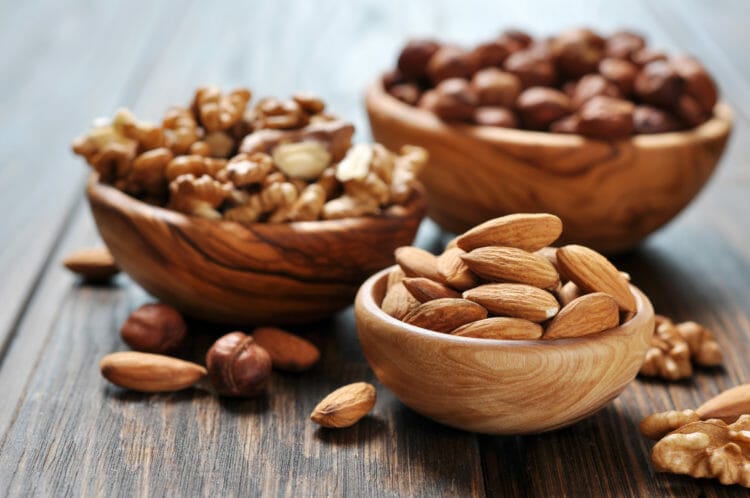
Similar to legumes, most nuts contain phytic acid, which binds nutrients and thus prevents your body from absorbing them.
Hazelnuts, pine nuts and almonds have a moderate amount of carbs. So don't overindulge on these nuts, or on their corresponding nut butters.
Personally, I don't do well with nuts and try to avoid them.
2. Vegetables That Grow Below the Ground
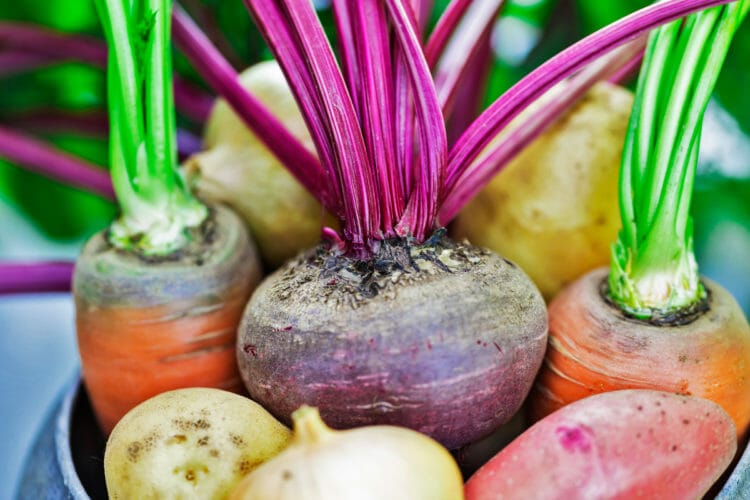
Vegetables that grow below the ground often have more total carbs than those that grow above the ground.
However, I do include certain below-the-ground vegetables in my diet, including carrots and, to a lesser degree, onions and garlic. My wife occasionally uses garlic to garnish dishes or to add flavor.
On a strict ketogenic diet, you should stay away from potatoes — especially sweet potatoes, which are a common paleo diet food but have no place in keto diets due to their high carb content.
Similar to bananas, I consume sweet potatoes on occasion but that hasn't negatively impacted my overall health or well-being.
3. Fruits With a Moderate Glycemic Index
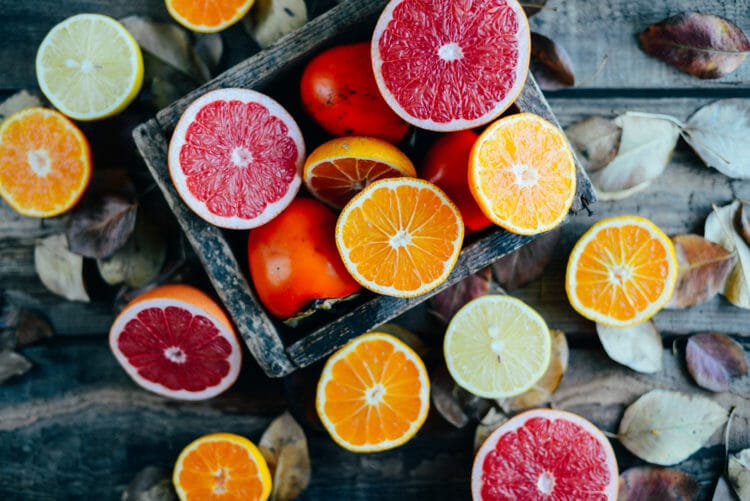
If you're new to low-carb eating, I recommend staying away from fruits that have a lot of sugar. When I started with a ketogenic diet, I stopped eating bananas and grapes due to their high sugar content, but I continued to enjoy cantaloupe, watermelon, peaches and citrus fruits in moderation.
But once you're metabolically healthy, there is no reason to exclude fruits that have a lot of sugar (fructose) unless your goal is to remain is consistent ketosis — something I don't recommend for extended periods as we'll talk about further down.
4. Cheese
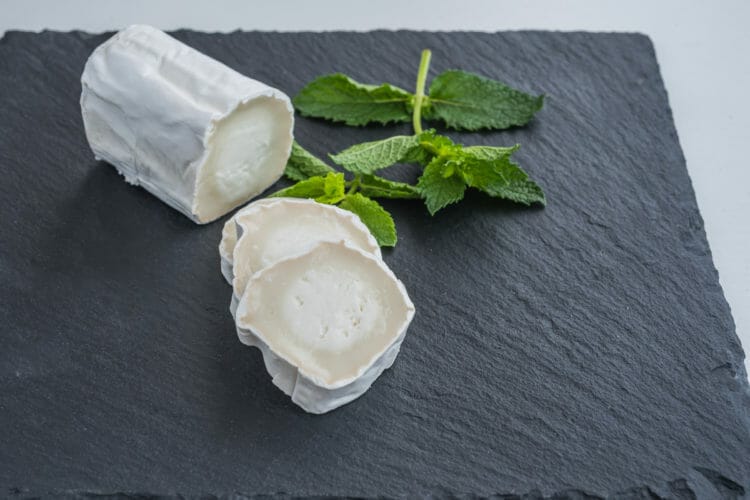
As I mentioned above, most cheese that's made from cow's milk contains an inflammatory protein called casein-beta A1. As a result, I highly recommend refraining from eating cream, cheese or other dairy products.
If you must have cheese, opt for goat, sheep or camel cheese, each of which contains a less inflammatory type of protein called casein-beta A2.
As always, listen to your body! If you handle dairy well, have at it. But if you experience digestive issues, headaches, a stuffy nose or other symptoms, it might be better to avoid dairy altogether.
Download Keto Paleo Food List
What Can You Drink?
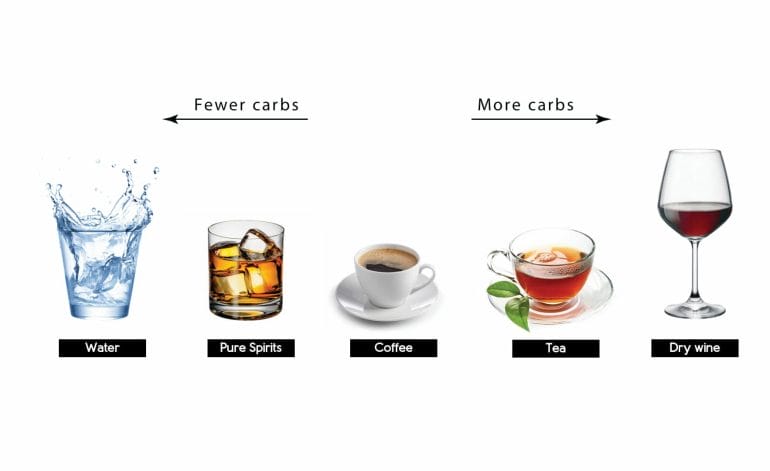
Ketogenic Paleo-Friendly Drinks
- Water
- Coffee (black or with fat/oil)
- Tea (unsweetened)
Hydrating while on the keto diet is relatively straightforward, but you don't have many options. I recommend sticking to filtered water, coffee or tea.
If plain water isn't your thing, feel free to add a sliced lemon or a splash of lemon juice. I recommend filtered instead of tap water because I don't want to risk my gut health by exposing my gut microbes to all the chemicals and potentially harmful toxins in municipal tap water.
If you don't like your morning coffee black, you can add coconut oil, ghee, or even grass-fed butter or cream. Since I'm not a fan of dairy, I usually stick with coconut oil, MCT oil or ghee.
If you prefer tea over coffee or water, make sure it's of good quality and unsweetened. I also recommend staying away from any artificial or non-caloric sweeteners, which often have sugar (despite what it says on the label) or can negatively influence how your body responds to glucose.
Beverages to Avoid
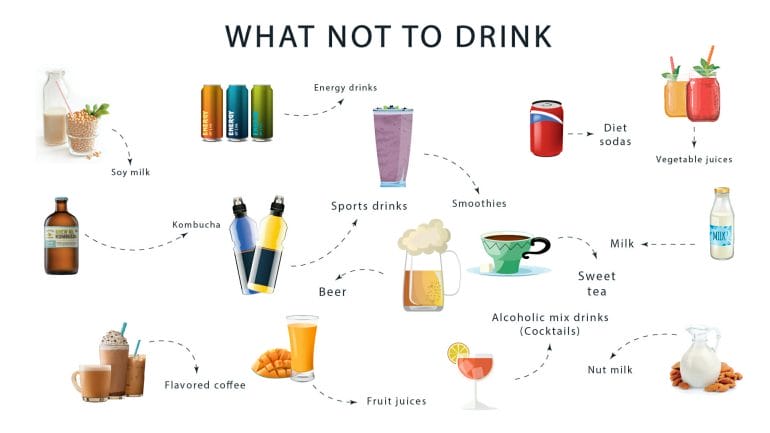
Avoid
- Beer
- Coffee with milk, creamer or flavor syrups
- Cow's Milk
- Soda
- Diet Soda
- Fruit juices
- Kombucha
- Milkshakes
- Mixed alcoholic drinks (cocktails)
- Nut milk
- Soy milk
- Smoothies
- Sweet tea
- Vegetable juices
- Sports drinks (Gatorade)
- Energy drinks (Red Bull)
Unsurprisingly, the list of beverages you should avoid on a ketogenic diet is long. That's because most of these beverages contain an unhealthy amount of sugar, carbohydrates and/or artificial sweeteners. As a result, you should be avoiding them regardless of whether or not you're doing keto or paleo.
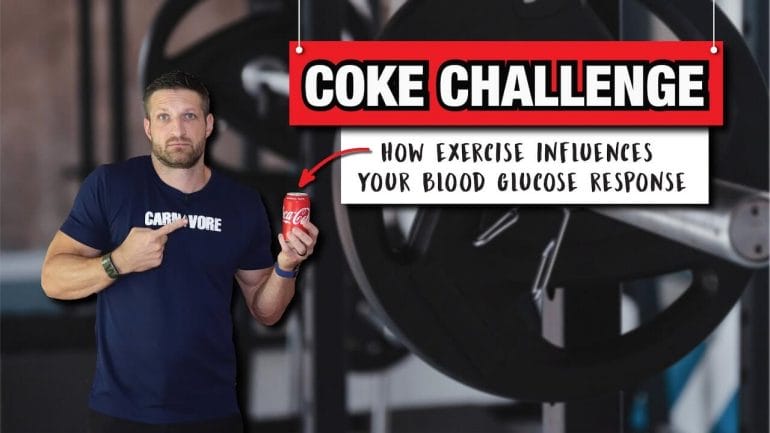
Milk and Keto
While the traditional ketogenic diet allows for certain dairy products, including butter, ghee (clarified butter) and aged cheese, you shouldn't drink milk.
There are two problematic ingredients in milk: casein (milk protein) and lactose (milk sugar).
As discussed previously, casein-beta A1 is an inflammatory protein that poses a number of health risks. Lactose is a sugar that triggers an immediate insulin response, and the majority of the adult population lacks the enzyme (lactase) necessary to break it down.
If you're interested in learning more about how each of these substances affects your body (and why you should steer clear of low-fat dairy products in particular), check out my write-up on why dairy is bad for you.
The good news is you can still whip up delicious keto smoothies and protein shakes using coconut milk and other healthy ingredients. Check out my favorite recipes here.
Since publishing this article, I started drinking milk kefir, which I make using raw milk from A2 Jersey cows. Based on the data from my continuous glucose monitor, doing so hasn't caused any crazy spikes in blood sugar.
Beverages to Consume in Moderation
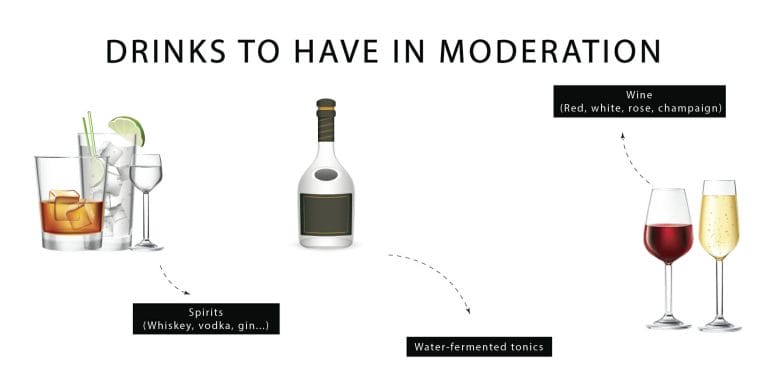
Consume in Moderation
- Wine
- Spirits
- Water-fermented tonics
If you like to enjoy the occasional glass of wine or spirits, I've got good news for you: Both have reasonably low amounts of carbohydrates that should not kick you out of ketosis.
However, if you're a wine drinker, I recommend choosing dry wines only. The sweeter a wine is, the more sugar it has. As far as spirits are concerned, you'll be fine as long as you don't mix them with fruit juices or other carb-containing liquids.
If you don't drink alcohol, there are also some water-fermented drinks with low amounts of sugar you could enjoy. Check out my keto supplements page for more information.
Top 16 Health Benefits
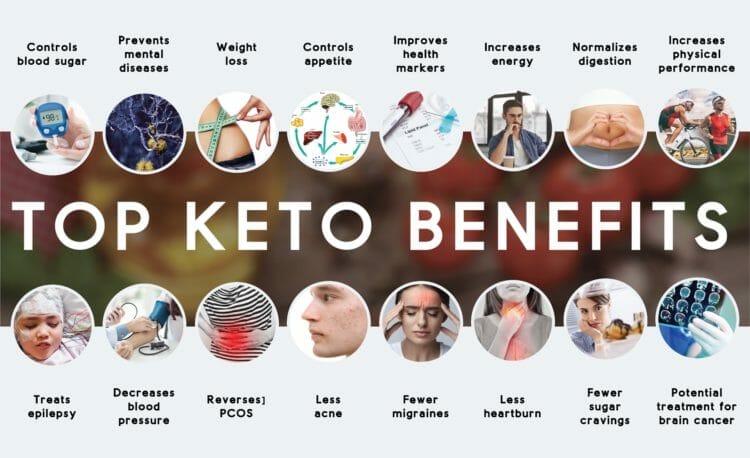
The more we learn about how the food we eat influences the chemistry in our bodies, the stronger the evidence becomes that diet is directly linked with all the metabolic diseases we, as a society, suffer from today. That's why some people refer to these conditions as diseases of civilization.
In a nutshell, many non-infectious diseases have inflammation as a common root cause. And inflammation begins when we start overloading our bodies with polyunsaturated fatty acids and over-processed junk food.
Congenital diseases like Down syndrome and heart malformations are examples of non-infectious chronic diseases without inflammation as a root cause.
Why is that important?
Chronic inflammation is the primary cause of all chronic diseases we know of in modern humans, including Alzheimer's disease, Parkinson's disease, ADHD, depression, multiple sclerosis, diabetes, coronary artery disease, stroke and cancer.
I used to consider a ketogenic diet an excellent method of reducing the risk of developing those diseases. However, I've come to the conclusion that a ketogenic diet is most effective as an alternative or supporting treatment for chronic diseases.
For example, if you suffer from metabolic dysfunction (i.e., diabetes, auto-immune disease, cancer, etc.), going on a ketogenic diet might reverse, or at least significantly improve, your symptoms. However, if you're metabolically healthy, a long-term ketogenic diet might not be necessary. In fact, staying in ketosis for extended periods might actually be detrimental to your health (as I experienced first-hand).
As a result, I recommend a ketogenic diet as an interventional tool to treat metabolic dysfunction. As a positive side effect, many people on a high-fat low-carb diet also report significant weight loss, improved mental clarity, better physical performance, curbed appetite and more.
Here's a list of the most important health benefits of short-term or interventional ketogenic diets in general.
1. Control Blood Sugar and Reverse Type 2 Diabetes
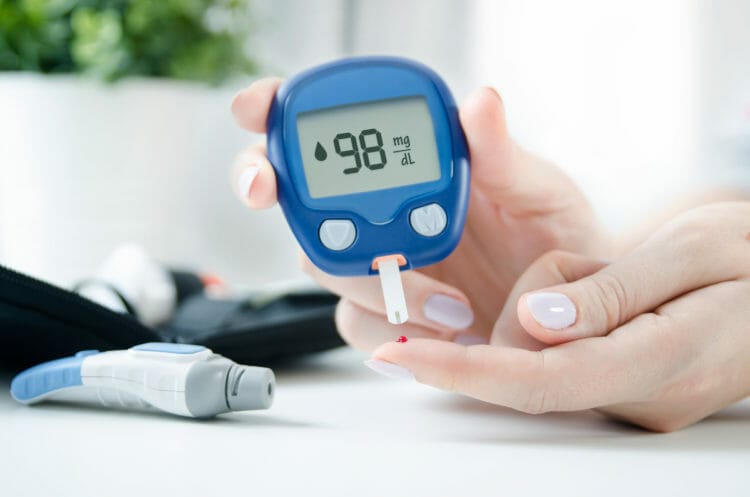
You can directly influence your blood glucose levels (blood sugar) through your carbohydrate intake. When you eat carbs, your body converts them into glucose and then releases insulin to carry that glucose into your cells (or store it as fat).
If you significantly reduce your carbohydrate intake, as is the goal with the ketogenic diet, your blood glucose levels go down, including your hemoglobin A1c (HbA1c) — which reflects your average blood sugar over the past three months.
Numerous studies have shown that a ketogenic diet can not only help you manage Type 2 diabetes, but can also, in many cases, completely reverse the disease.
However, it's worth noting that if you're metabolically healthy, long-term ketogenic diets can actually cause your blood sugar levels to be slightly but chronically elevated. I noticed that after being on a ketogenic diet for over two years, my fasting blood glucose levels hovered between 85-100 mg/dL. That's about 10-20 points higher than my normal levels.
The reason for that is because of what's called adaptive glucose sparing or physiological insulin resistance — the body's way of ensuring that there's enough glucose available for the cells that can't rely solely on ketones.
I don't think slightly elevated fasting glucose levels are a major concern, as long as the fasting insulin levels remain low. But it's worth being aware of this phenomenon.
2. Prevent Alzheimer's Disease and Other Mental Diseases

Contrary to what we thought we knew about Alzheimer's disease in the past, we now understand that the condition is actually caused by an impaired glucose metabolism of the brain due to insulin resistance. The latter is likely caused by a combination of dietary linoleic acid (from vegetable oils) and highly-processed carbohydrates.
In other words, the polyunsaturated fatty acids and sugar you consume in your 30s and 40s might ultimately cause mental diseases, such as Alzheimer's, a few decades later.
If you're lucky enough to get to your mid-80s, your chances of developing Alzheimer's are 50/50. Some neurologists, such as Dr. Perlmutter, are convinced that Alzheimer's and other neurodegenerative diseases are 100% preventable through proper dietary and lifestyle choices.
Insulin resistance of the brain as a factor associated with Alzheimer's is so well documented that some researchers have called Alzheimer's "Type 3 diabetes."
National Institute of Health
Interestingly enough, the brain in patients with impaired glucose metabolism can still use ketones for fuel. And while scientists don't fully understand the exact mechanisms of how the brain uses ketones, a study from 2016 concluded that ketones as fuel in the brain enhance mitochondrial respiration (energy production), promote the strength of nerve impulses, increase BDNF expression (brain-derived neurotrophic factor), reduce oxidative stress and reduce inflammation, among other things.
3. Weight Loss
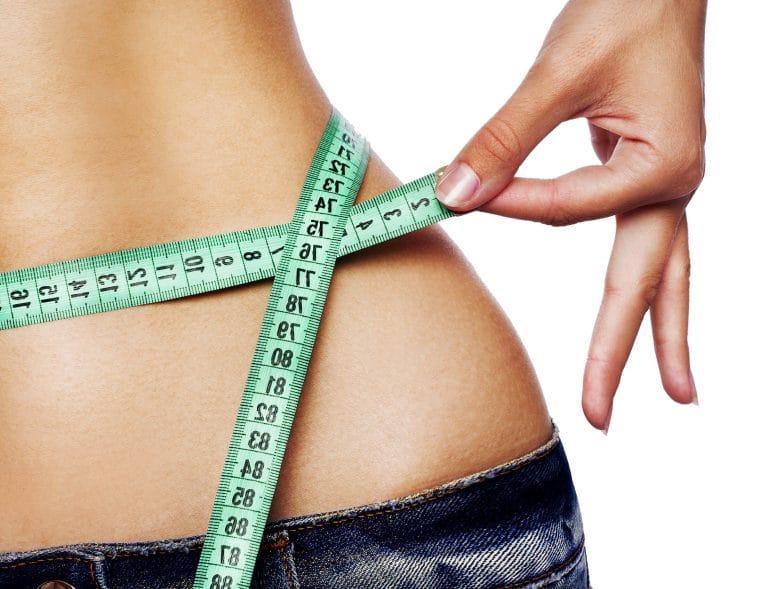
Keto is an effective weight-loss diet because when your body is in ketosis, you burn fat for energy — including your body fat. While you can amplify that effect if you combine the keto diet with intermittent fasting, you don't have to starve yourself to burn fat and lose weight.
Note that you might experience more or less dramatic short-term weight loss during the first few weeks of starting a keto diet. However, that's mostly due to the excess water you lose because of increased urination.
4. Appetite Control
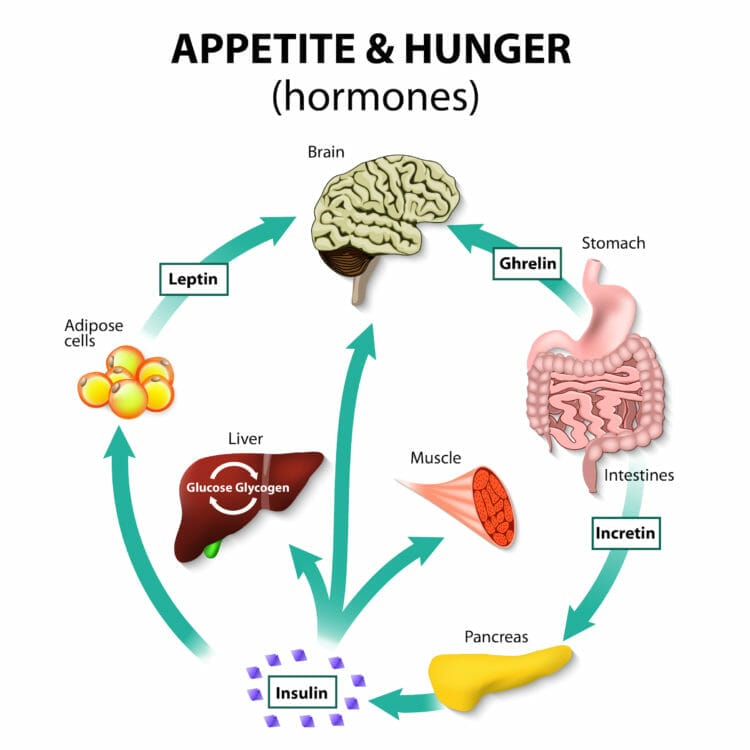
A low-carb ketogenic diet is an excellent way to curb your appetite. If you maintained a high-carbohydrate diet before starting a keto diet plan, you might crave the carbs — and especially the sweets — that your body is no longer getting.
But once you're over that carb withdrawal, you'll likely notice that you're less hungry between meals. That's because your body has 24/7 access to (body) fat it can burn for energy.
So if you don't feel hungry when it's time for a meal (breakfast, lunch or dinner), just skip it. As part of my intermittent fasting routine, I usually skip breakfast because I'm not hungry in the morning.
5. Improved Health Markers

Numerous studies are showing that a low-carbohydrate diet can improve several important health markers associated with the so-called metabolic syndrome.
Specifically, if you focus on eating low carb foods, you'll likely see improvements in your lipid profiles, including the high-density lipoprotein (HDL cholesterol), and triglycerides. You might also see improvements in total cholesterol and low-density lipoprotein (LDL).
Keep in mind that your low-density lipoprotein (LDL) score is not measured but calculated, and that it's ultimately an irrelevant number. What does matter is the number of small LDL particles, which are caused by the carbs in your diet. So the next time you get a blood test, ask your doctor to also measure your cholesterol particle volume!
Besides improved blood work, you might also see improved blood sugar and insulin levels, as well as lower blood pressure.
To give you some anecdotal evidence of how paleo and keto have changed my health markers, here are some test results from the past few years.
| Lipid Panel | 2012 | 2013 | 2014 | 2015 | 2016 | 2017 | 2018 | 2019 | 2020 | 2021 |
| Triglycerides | 102 | 90 | 99 | 79 | 58 | 46 | 38 | 50 | 65 | 44 |
| HDL | 41 | 43 | 31 | 52 | 49 | 53 | 45 | 48 | 45 | 46 |
- Triglycerides: Lower is better. A normal range is 0 – 149.
- HDL: Higher is better. A normal range is 39 – 100.
I started the paleo diet in March of 2015 and added keto in 2019.
Note that I only included the relevant blood markers, and not the total cholesterol or LDL, because the latter simply don't matter.
Also, I recently got a calcium score test done that measures calcium deposits inside arteries. The test came back with a score of 0. In other words, I have zero calcium deposits, "despite" my high intake of saturated fats and cholesterol.
6. Increased Energy and Mental Performance

Ketones are the optimal fuel for the human brain, and while on keto your body has an ample supply to feed and fuel your brain continuously. In contrast, energy from glucose usually comes in waves that correspond with blood sugar swings after eating carbohydrates.
As a result, many people on keto diets report improved focus and concentration, better mental clarity, and less brain fog. You may also experience an increased level of energy, and less severe "carb crash," after a meal.
Both my wife and I have noticed dramatic improvements in clarity and mental performance while being in ketosis.
7. Normalize Digestion
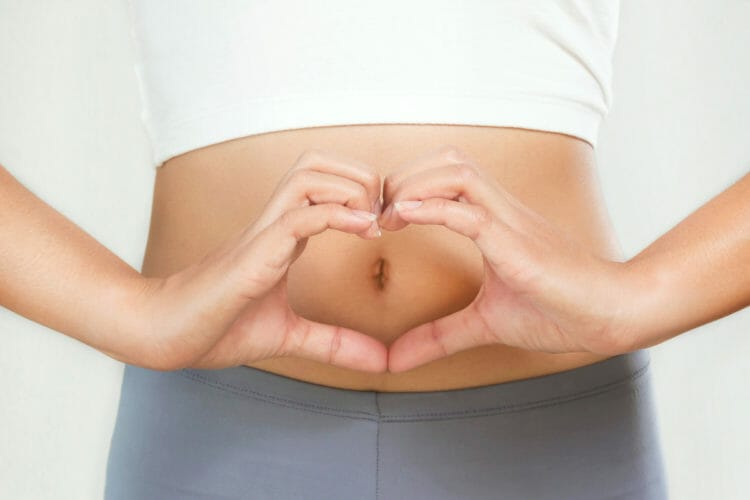
There is some evidence that keto diets can have a positive effect on certain gastrointestinal conditions, such as irritable bowel syndrome (IBS), cramping and bloating.
Every time you make significant changes to your diet, your stomach may react positively or negatively. Often, those changes are temporary and you go back to normal within a few days.
For your body to digest fat, it needs help from emulsifiers in bile acids that are supplied by the liver. That emulsification of fats takes a bit longer than breaking down carbohydrates using enzymes, such as amylase.
When I started keto, I immediately noticed a change in my bowel movements and a calmer stomach. However, as I began introducing foods and supplements that I hadn't eaten before, such as fermented foods and probiotics, my bowel movements went back to normal.
After several years of trial and error, I came to the conclusion that cutting out most plants (e.g., vegetables) makes me feel my best. When I stick to meals consisting of meat and seasonal fruits, I don't get bloated or gassy, or experience any other GI issues. But as soon as I add certain vegetables, nuts or seeds, all bets are off. You can learn more about why that is in my article about plants vs. meat, and I encourage you to check it out if you're suffering from IBS or other GI issues.
8. Increased Athletic Performance

Based on studies performed with competitive endurance athletes like ultra-endurance runners, athletes who have been keto-adapted show similar patterns of muscle glycogen utilization and repletion as athletes who consume a high-carbohydrate diet.
In other words, there doesn't appear to be much of a difference between keto and high-carb diets as far as athletic performance among endurance athletes is concerned.
That makes sense because, at lower heart rates, your body has a virtually endless supply of energy from your fat stores.
Another study concluded that keto has no negative impact on strength training, and there is a growing number of bodybuilders and strength athletes who choose a ketogenic diet to improve body composition and lean muscle mass.
There isn't a lot of research that I have found on the long-term effects of keto on high-intensity exercises such as CrossFit, which is what I do.
However, to give you some anecdotal evidence based on my experience, I have noticed a few changes in my performance while on keto. Specifically, my strength and endurance at lower heart rates have improved as my body has adapted to using fat for fuel. However, my performance during high-intensity workouts has suffered.
As my heart rate goes up, my body switches from fat to glucose as the primary source of fuel. Once I have reached that threshold and my glycogen reserves are depleted, my performance declines measurably.
Since I switched from a strict ketogenic diet to an animal-based diet that allows for more carbohydrates (up to 150 grams per day), I've noticed that my cardiovascular performance during CrossFit workouts has improved and my strength has skyrocketed.
The downside is that by consuming more carbs, I'm also storing more water, making me look bulkier and less ripped. I don't mind that, because I do CrossFit to improve my health and not because I want to compete in a Mr. Fitness contest.
If you're a competitive athlete and wonder whether keto is right for you, make sure you check out my article about the best diet for improving endurance and strength.
9. Treat Epilepsy

The ketogenic diet became famous as a proven treatment for childhood epilepsy during the 1920s. Since then, doctors have started leveraging keto in adults who suffer from epilepsy.
The results are more than promising and often allow patients to reduce the dosage of, or completely get off of, anti-epileptic drugs and other anti-seizure medications.
10. Decreased Blood Pressure

High blood pressure (hypertension) is often caused by lifestyle choices, and, in particular, your diet.
Studies have shown that a diet high in carbohydrates (and thus blood glucose and insulin levels), can lead to obesity, disturbed cholesterol metabolism, and high blood pressure.
As a result, a ketogenic diet — which is an extremely low-carbohydrate diet and thus better suited for managing blood insulin levels — can also decrease your blood pressure.
11. Reverse PCOS
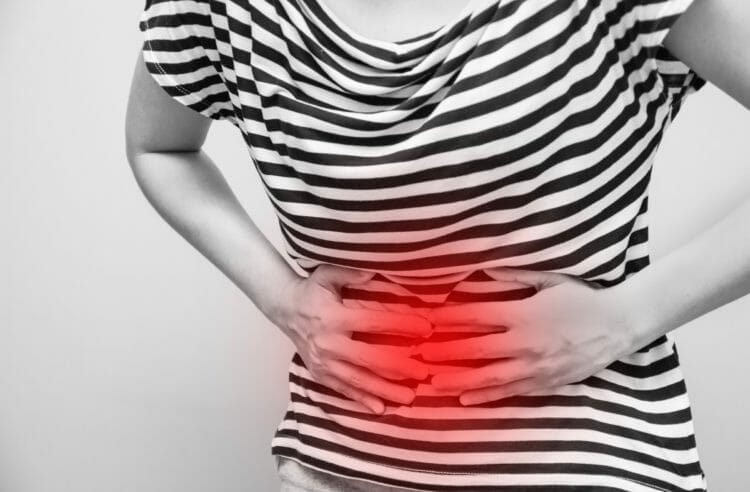
Polycystic ovary syndrome (PCOS) is a chronic condition that is more prevalent in women who are overweight, who have Type 2 diabetes, or who show other signs of insulin resistance.
A ketogenic diet can help you normalize your body's glucose metabolism, reverse Type 2 diabetes, and help you lose weight. As a result, you can often reverse PCOS in the process.
12. Less Acne
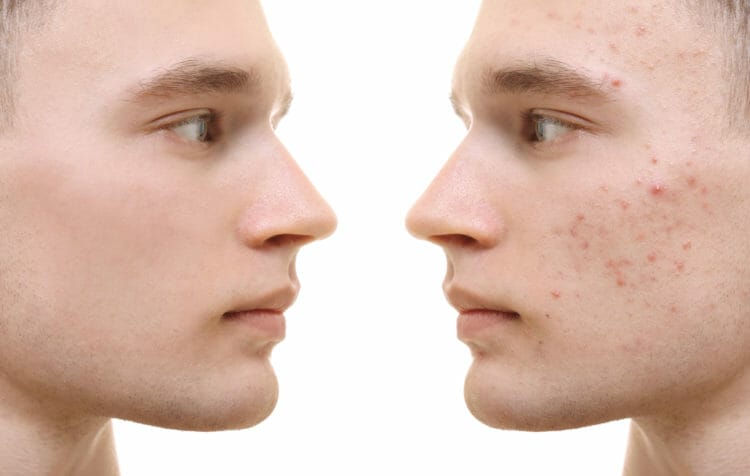
Acne is caused by leaky skin, a condition similar to leaky gut, which is caused by an inflammatory response to the food you eat.
Specifically, leaky gut is caused by dysbiosis, an imbalance in your gut microbes that causes the tight junctions in your gut to become permeable.
The same can happen with the microbiota on your skin. Keep in mind that 90% of all the cells in and on your body are non-human. They are microbes (bacteria) that control thousands of functions in your body. What that means is that the cells on those microbes outnumber our cells by 10 to 1. Thus, maintaining a healthy microbiome has a number of positive health impacts.
While some studies have identified carbohydrates to be the primary cause of acne, I'd argue that plant-based toxins may play a part in causing inflammation.
If you're suffering from acne, I'd recommend a special type of no-carb high-fat diet known as the carnivore diet. It's an excellent reset diet because it doesn't include any of the toxins and allergens found in plant-based foods.
13. Fewer Migraine Attacks
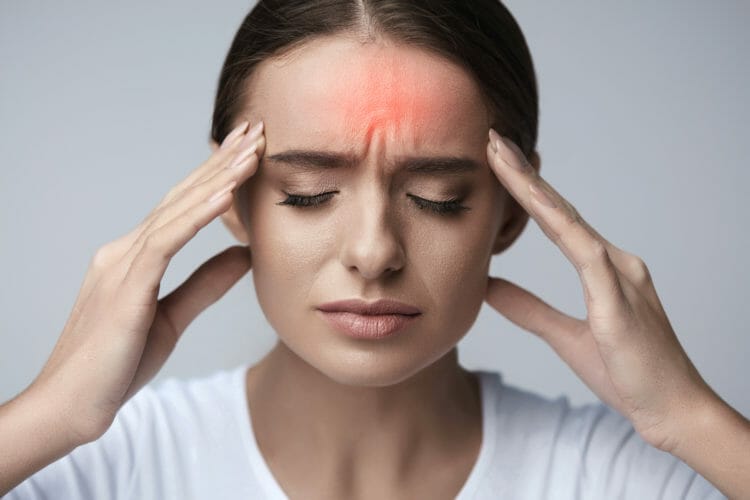
Unless caused by trauma or injury, migraines — much like other chronic diseases — are often caused by your lifestyle choices and diet.
Eating "clean" food without artificial additives can often improve symptoms and reduce migraine attacks. What's more, two promising studies have demonstrated the positive impact of a ketogenic diet on headaches and migraines.
14. Less Heartburn
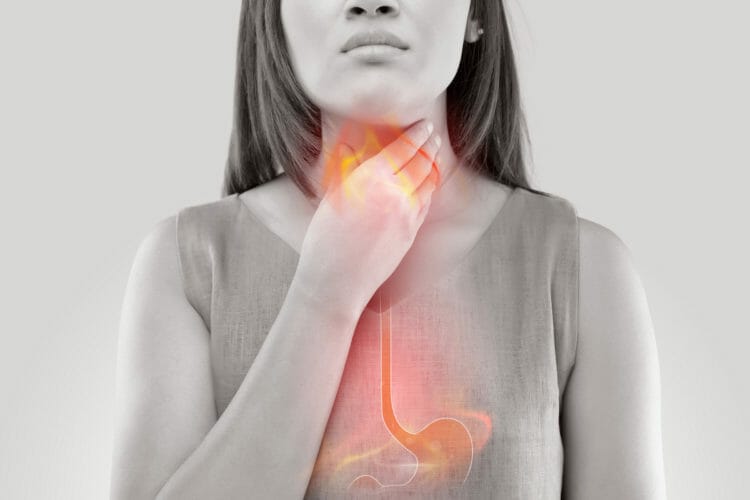
Heartburn or acid reflux is often caused by the carbohydrates and sugar you consume through the food you eat.
So instead of taking medications to treat the symptoms, like millions of people do every day, why don't you fix the root cause? Several studies have demonstrated vast improvements, allowing participants of the study to get off their reflux (GERD) medication entirely.
I used to suffer from heartburn, but it hasn't been a problem for me since switching to a Paleolithic eating regimen in 2015.
15. Less Severe Sugar and Carb Cravings

Eating sweets and sugar-laden food is satisfying. That's why many people are addicted to sugar and processed carbs that rapidly convert to glucose inside the body.
After eating fast-converting carbohydrates, your body releases insulin to get rid of the of excess glucose in your bloodstream. Once your blood sugar drops, you crave more to maintain your energy levels. That's a vicious cycle that a ketogenic diet works to break out of.
Additionally, the digestion of specific proteins in grains yields opioid-like peptides that can drive addiction. Examples include the gliadin in wheat, rye and barley; zein in corn; and avenin in oats. By cutting out those grains as part of a ketogenic diet, you will likely experience fewer carb cravings.
16. Potential Treatment for Brain Cancer
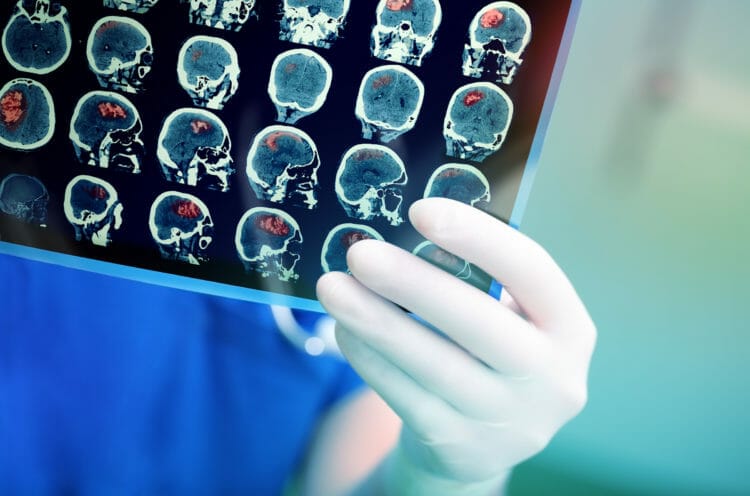
Normal cells in your body can switch back and forth between using glucose or ketone bodies for fuel. Cancer cells don't have that ability — they need glucose (and glutamine) to thrive.
So it only makes sense that depriving cancer cells of glucose either kills them outright or weakens them so that traditional treatments (such as radiation or chemotherapy) can be more productive. One of the leading researchers in using a ketogenic diet for cancer treatment is Dr. Thomas Seyfried, who explains in his book Cancer as a Metabolic Disease* that cancer is linked to abnormalities in the structure and function of the mitochondria — the powerhouse of your cells.
You can read more about Dr. Seyfried's approach to cancer treatment in a paper he and his peers released in February of 2017.
Other Benefits of the Ketogenic Paleo Diet
In addition to all the benefits I listed above, I recently learned from Dr. Perlmutter, a neurologist and advocate of the ketogenic diet, about other areas where research into the health effects of a high-fat low-carb diet has shown promising results:
- "Superfuel" for the brain
- Treatment of cancer (beyond brain cancer)
- Enhances the production of brain-derived neurotrophic factor (BDNF)
- Reduces oxidative stress
- Enhances mitochondrial function and biogenesis
- Reduces acute inflammation and lessens the risk of chronic inflammation
- Treatment of Parkinson's disease
Top 10 Side Effects of a Ketogenic Diet
Most people tolerate a ketogenic diet very well, but there are some potential side-effects you should know about. The good news is that you can avoid most of them by not making the common mistakes I list further down.
Additionally, I recommend using keto as an intervention or reset diet instead of a life-long eating strategy.
1. Keto Flu

The most common side effect that you may have heard about is the keto flu. People gave it that name because the symptoms are similar to that of the real flu, including:
- Fatigue
- Dizziness
- Irritability
- Headache
- Nausea
- Difficulty focusing ("brain fog")
- Lack of motivation
While some of these symptoms might be because you're in full withdrawal from carbohydrates, they're often caused by insufficient dietary fat and out-of-balance electrolytes.
So make sure you drink enough liquids and increase your intake of healthy fats and electrolytes. One way of doing that is by eating a lot of avocados (which are high in potassium and magnesium), and by generously using a high-quality salt. You can also drink bone broth (which has plenty of sodium), or you can use a keto supplement (which are especially helpful when you're traveling).
2. Excessive Urination (at Night)

One of the things I struggled with a lot during the first few weeks of doing keto was excessive urination — especially at night. I had to get up at least once in the middle of the night to pee, which negatively impacted my sleep and recovery.
The common misconception is that excessive urination will stop automatically in a few days, once the body has gotten used to keto. In my case, it didn't stop until I figured out the root cause: a lack of sodium (electrolyte imbalance).
Think about it: if you eat a lot of processed food you get plenty of sodium — it's a common preservative. If you eat predominately fresh food, you won't get a lot of sodium, unless you add it. In the past, I barely used salt, and that habit continued when I started keto.
By cutting out processed foods and not adding salt to my dishes, my sodium levels tanked. Once I started adding salt (in liberal amounts) to my dishes, I stopped waking up at night and my frequency of urination during the day went way down.
So how much salt do you need? Based on the USDA dietary guidelines, less than 2,300 mg of sodium per day. As with other misguided government regulations, that's about half of what the latest scientific research suggests.
Based on a study from 2011, your risk factors for developing heart disease are highest when you consume less than 2,000 mg of sodium per day. The risk was lowest among those individuals who consumed 5,000 mg of sodium per day.
So get yourself a high-quality salt — I like Redmond Real Salt — and make sure you're getting enough sodium. Note that table salt is about 40% sodium and 60% chloride. That means you need over 12 grams of salt to reach 5 grams of sodium.
The Science Behind Your Urge to Pee
In case you wonder what the mechanisms are behind frequent urination, here are the two main factors involved:
First, when you eat carbs, your body stores them in the form of glycogen in your muscles and liver. Storing glycogen requires water at a ratio of about 1:4 (glycogen/water).
When you start keto and your body begins emptying its glycogen stores, it also frees up the stored water and you need to pee more often. So the common advice is that unless you cycle in and out of ketosis frequently, that phenomenon should stop during the first few days of keto. However, as we discussed above, that's unlikely to happen unless you also ensure sufficient sodium intake.
The second pathway to increased urination has to do with the conversion of protein to glucose in your liver (gluconeogenesis). Proteins contain nitrogen (-NH3) that your kidneys excrete as urea. The more urea your body produces, the more you have to pee.
3. Carb Cravings
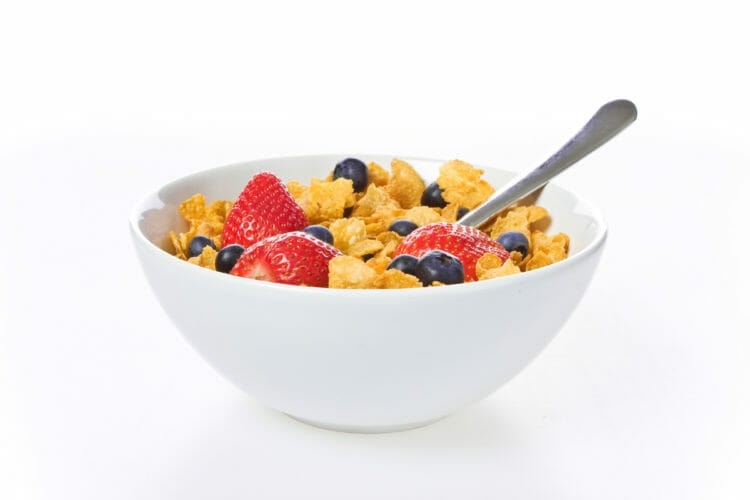
Withdrawing from carbs can be tough. You might feel irritated, and you might feel like giving in. Stay strong! Those cravings usually subside after a couple of days.
My wife makes delicious coconut milk pudding with chia seeds, organic cocoa powder, and a drop of stevia. It tastes like a sweet, but it's pure fat and thus 100% keto-friendly. The original, paleo-friendly recipe is from Danielle Walker, but we removed all the fruits to make it one of our go-to keto recipes.
4. Leg Cramps
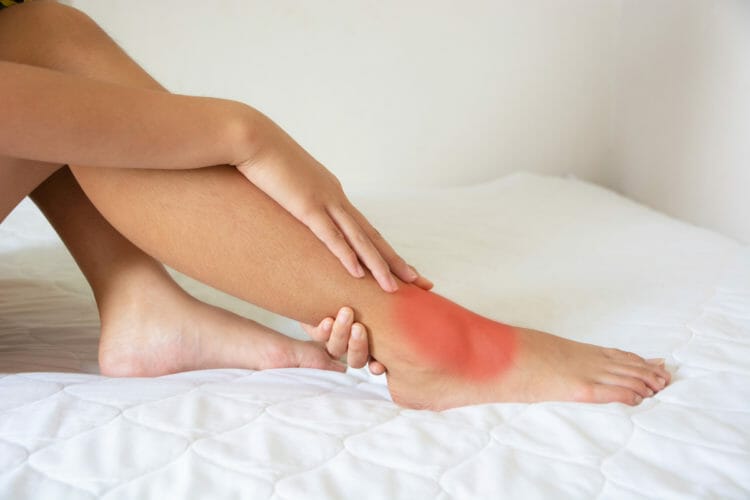
Leg cramps are usually caused by low electrolyte levels, and low sodium or magnesium levels in particular. So make sure to drink enough water and eat food that's high in magnesium, such as avocados, dark chocolate, Brazil nuts or chia seeds.
If you're thinking about supplementing with magnesium, I recommend electrolytes or products that deliver magnesium via the skin*. Why? Because orally-taken magnesium in high doses has a laxative effect.
5. Constipation
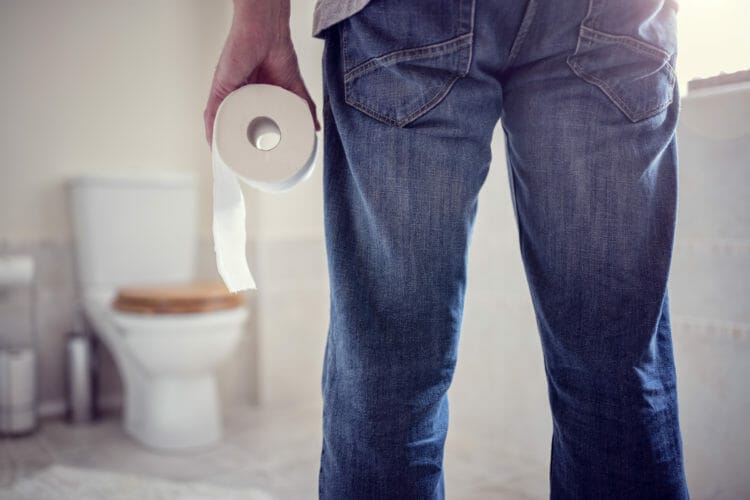
Any time you change your diet, you may also experience a change in bowel movements, including constipation or diarrhea. That's particularly common if you eat a high-fat diet because fat can slow down your digestion.
I recommend taking a few days to transition to a ketogenic diet to give your GI system a chance to adapt. Also, don't forget to drink plenty of water and to get enough salt.
6. Keto Breath

One of the ketone bodies is called acetone, and it has a fruity smell. When you're in ketosis, some of that acetone can escape via your breath (and when you're sweating).
Once you're fully keto-adapted, which is usually within a week or two, your body will stop leaking ketones and the smell will go away.
7. Heart Palpitations
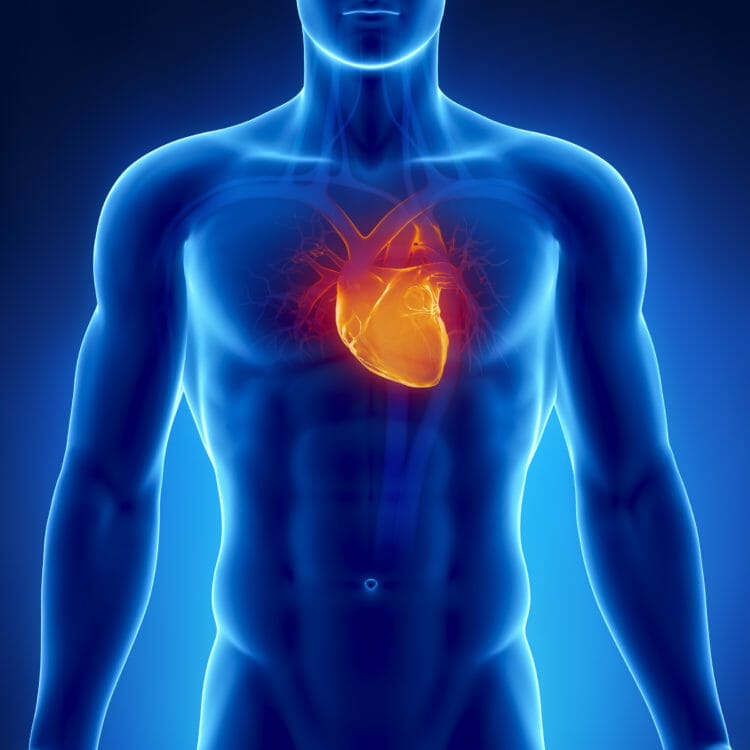
If you feel like your heart is beating faster or harder while on keto, just increase your fluid and salt intake. In many cases, those heart palpitations are caused by dehydration or low sodium levels.
If water and salt don't fix the problem, your body could also be releasing more stress hormones than usual due to your carb withdrawal.
However, if you're taking insulin or blood pressure-lowering drugs, talk to your doctor (ideally before starting a ketogenic diet).
8. Reduced Physical Performance

While you're experiencing symptoms of the keto flu, your physical performance often suffers. The good news is that you can fix both by making sure you're getting enough fat through your daily calories, sufficient water, and plenty of electrolytes.
However, if you're doing a high-intensity type of workout that relies on the availability of glycogen (such as CrossFit), you might experience lower than usual performance while on keto.
9. Less Tolerance for Alcohol

If you consume alcohol while on keto, you might get tipsy quicker than usual. That's because some people experience a reduced tolerance for alcohol in combination with a high-fat low carb diet.
The reduced tolerance for alcohol is related to a lack of carbs, which, if present, slows down the absorption of alcohol into your bloodstream.
Either way, you might want to consider drinking less or slower, especially if you have to drive.
I've noticed that drinking one glass of red wine has the same effect on me as drinking two glasses in the past. As a result, I've reduced my wine consumption and I have keto to thank for it.
10. Sleep Problems
Some people report that they wake up more often during the night while on a ketogenic diet. I noticed this phenomenon after having been on keto for about a year.
Based on what I've learned, the issue appears to be related to lower levels of serotonin and melatonin, as well as increased energy levels. I've noticed a similar effect during extended fasts.
My recommendation is to experiment with cycling in and out of ketosis if you're experiencing sleep issues to see if doing so improves the situation.
Five Less Common Keto Diet Side Effects
Below is a list of less common side effects of the ketogenic diet.
1. Gout
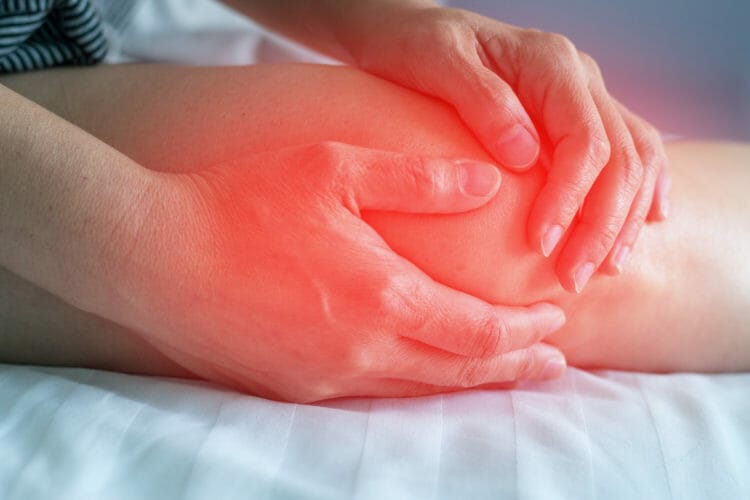
Gout is an inflammatory condition of the joints that's caused by high levels of uric acid in the bloodstream. While gout is more common in people who are overweight or who have Type 2 diabetes, studies have shown that uric acid levels can rise even in healthy people who follow a low-carb ketogenic diet.
That rise in uric acid often happens during the first few weeks of starting a keto diet, after which uric acid levels usually normalize or at least decline.
2. Temporary Hair Loss

Significant dietary changes, among numerous other things, can cause temporary hair loss. So unless there are other factors involved and you're not starving yourself, any hair loss that you experience is usually short-lived and barely noticeable.
3. Elevated Cholesterol
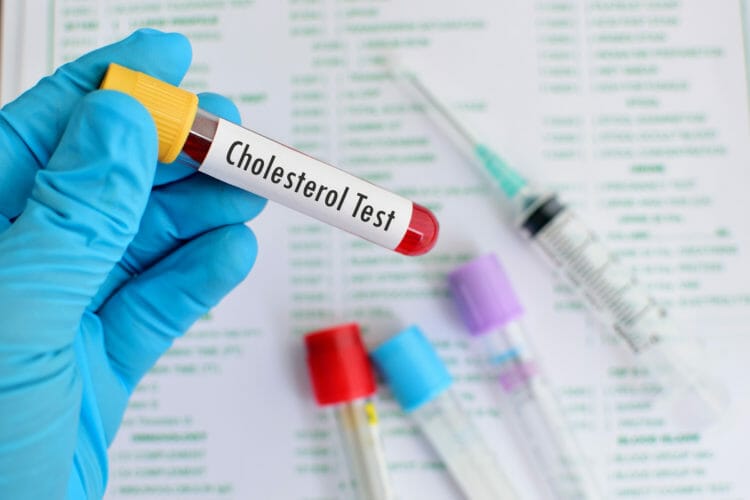
Most people who follow a ketogenic diet see a significant improvement in their lipid profiles. That means lower triglycerides and higher HDL cholesterol levels.
However, there have been cases of people with abnormally high total cholesterol and low-density lipoprotein (LDL) values. If you're one of them, Dr. Andreas Eenfeldt, a Swedish medical doctor and low-carb advocate, recommends the following steps:
- Reduce your intake of saturated fat (grass-fed butter, coconut fat, medium-chain triglyceride oil) and increase your intake in unsaturated fats like olive oil.
- Don't eat just because it's mealtime. Instead, only eat when you're hungry — even if that means skipping a meal. You can also try intermittent fasting!
4. Keto Rash

Just as acetone can cause keto breath, that same ketone body can rarely also cause a rash when excreted via sweat.
To cure the keto rash, you can try to sweat less by wearing different clothes, change your exercise routine, shower more often, or get out of ketosis by eating more carbs.
5. Higher Fasting Blood Glucose
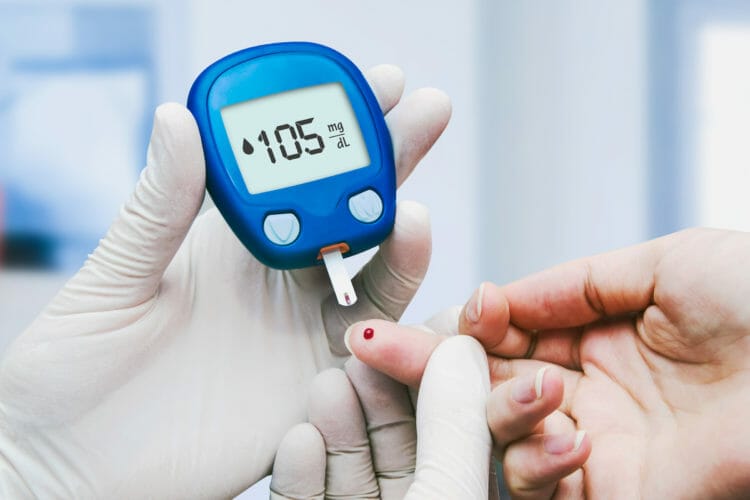
I haven't experienced higher fasting blood glucose levels myself, but there is a phenomenon called "adaptive glucose sparing" or "physiologic insulin resistance."
It's nothing to worry about, as it's only a sign that your cells have adapted to using ketones as fuel (instead of the glucose circulating in your bloodstream).
But where does the glucose on a super low-carb diet come from? Well, your liver can make glucose from non-carbohydrate sources (protein, lactate, etc.) in a process called gluconeogenesis for those cells that need glucose.
And the reason why your blood sugar levels might be higher in the morning is because that's when your metabolism gets into gear and the liver starts producing glucose.
Who Should Not Do a Ketogenic Diet?

A ketogenic diet is usually well-tolerated, but you should talk to a registered dietitian or a knowledgeable physician if:
- You take medication for diabetes, such as insulin
- You take medicines for high blood pressure
- You're breastfeeding
- You have kidney, liver, gallbladder or pancreas problems
- You're pregnant
- You have hormonal issues, such as hypothyroidism
- You've been diagnosed with other congenital metabolic disorders
I always recommend consulting with a medical professional who understands the impact of diet on health. Unfortunately, many primary care providers don't, and that makes it challenging to have a fact-based conversation about food and its effects.
Top 19 Keto/Paleo Myths and Controversies
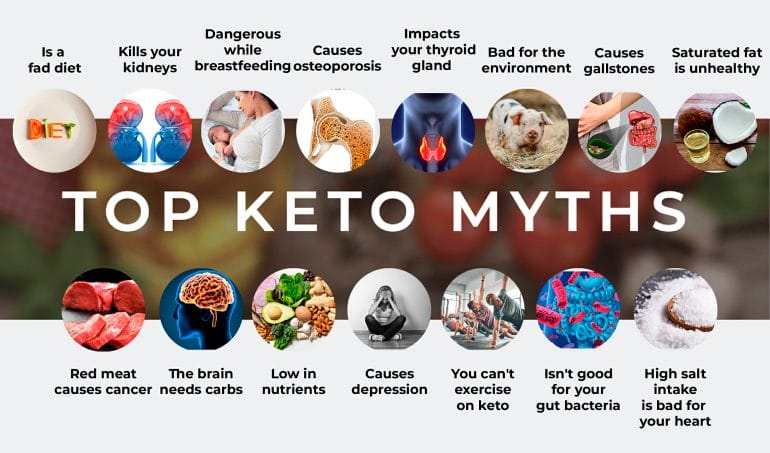
As with every dietary lifestyle that's different from the standard Western diet, some myths and controversies scare people away. Below is a list of the most common reasons why people might be against a low-carb diet, such as keto.
1. Keto and Paleo Are Fad Diets
My mom recently sent me an article from an Austrian tabloid claiming that the keto diet was just another in a long line of fad diets aimed at helping celebrities with short-term weight loss.
You've probably heard similar stories in the news, or from well-meaning friends who don't know any better. However, a ketogenic paleo diet is a science-based approach to reduce inflammation, prevent or treat the metabolic syndrome and other chronic diseases, and spur fat loss.
What's more, it's a dietary lifestyle that's millions of years old and that our Paleolithic ancestors practiced long before they were domesticating animals or utilizing agriculture.
However, it's important to understand that our ancestors likely didn't stay in ketosis for months or years in a row. It's more likely that they cycled in and out of ketosis based on food availability. In other words, don't make the mistake of thinking that being able to get into ketosis is good, so staying in ketosis for the rest of your life must be great.
Metabolic flexibility is important, and the keto diet is an excellent tool to achieve that. But once you are metabolically healthy and flexible, there's nothing wrong with consuming carbohydrates that are consistent with human evolution.
2. Keto Kills Your Kidneys
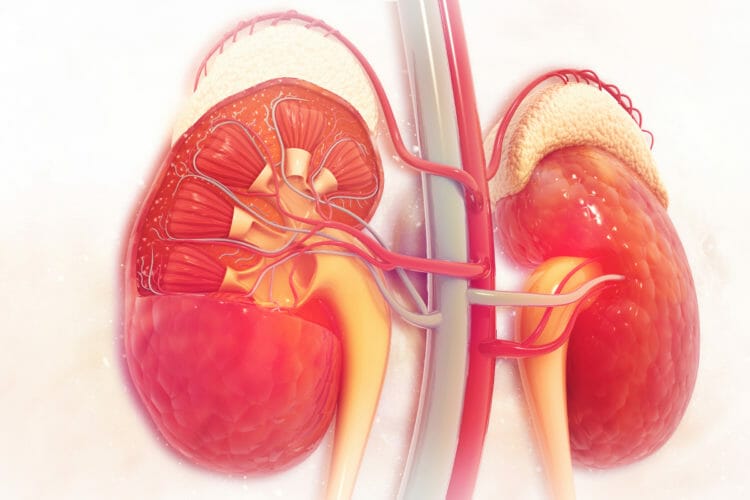
This myth stems from the fact that excessively high protein intake can have a negative impact if your kidneys are already damaged.
If your kidneys are healthy, they can handle excessive protein without any issues. What's more important is that the ketogenic diet, much like other forms of low-carb dieting, isn't high in protein.
So don't worry about it!
3. Keto Causes Weak Bones (Osteoporosis)
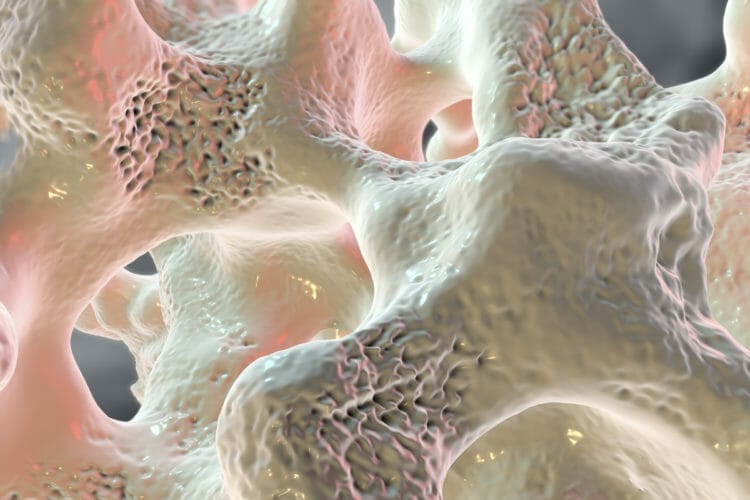
Some people believe that the food you eat can influence the acidity of your blood. If the blood becomes too acidic, it can leach minerals from your bones.
That's entirely false because, under normal circumstances, nothing you eat or drink (i.e., alkaline water) can change the pH of your blood. In fact, your body maintains tight control of your blood pH levels because if they were off by only a fraction, you'd be terribly sick.
4. You Can't Do Keto While Breastfeeding

No scientific evidence suggests that you shouldn't be on a low-carbohydrate diet while breastfeeding. However, keep in mind that breastfeeding increases your body's caloric demands (and particularly its need for carbohydrates).
Besides consulting with your doctor, I recommend increasing your daily calories and carb intake while breastfeeding. If you don't get sufficient calories, you might develop a rare condition known as ketoacidosis.
5. Keto Impacts Your Thyroid Gland
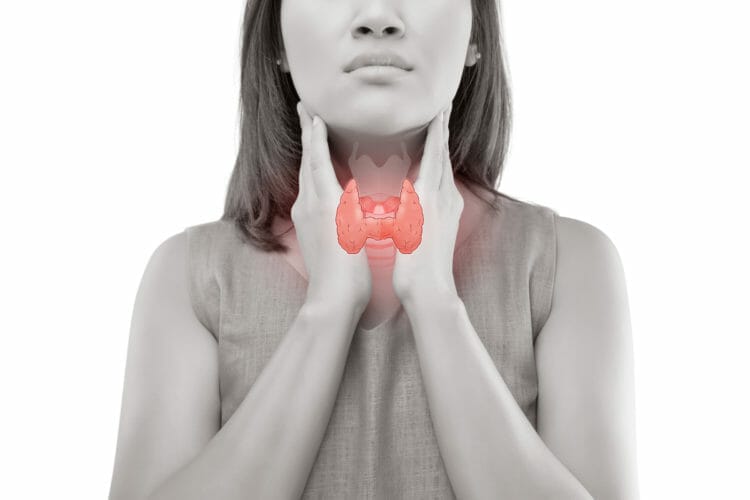
Maintaining a caloric deficit over long periods (starving yourself) can negatively impact your thyroid glands. However, low-carb dieting doesn't automatically imply caloric restrictions — even when you're intermittently fasting.
As a result, a well-balanced low-carb ketogenic diet with sufficient calories from dietary fat is unlikely to harm your thyroid gland.
If you're currently on thyroid medication, talk to your doctor as you might be able to reduce the amount or get off it entirely while on keto.
However, remaining in ketosis for extended periods (months or even years) can lead to lower thyroid hormone levels. I've experienced that phenomenon myself! Once I re-introduced carbohydrates into my diet again, my thyroid hormone levels normalized instantly.
6. Low-Carb Diets Are Bad for the Environment

This myth stems from the belief that eating primarily low-carb foods leads to a high-protein diet. As I'm sure you know by now, ketogenic and paleo diets are not necessarily high-protein diets.
However, it's true that meat production in the United States and other developed countries in unsustainable and unethical. The same is true, by the way, for farming in general — and in particular for carb-rich monocultures, such as soy, corn and sugar.
That's why I encourage you to buy pastured meats, poultry and eggs, as well as organically-grown fruits and vegetables.
Most of the meat Americans consume is processed and from corn-fed and feedlot-raised cattle. If you remove those types of meat from your keto and paleo meal plan, you automatically reduce your intake of red meat. That, combined with purchasing grass-finished beef, can have a positive impact on the environment. You can learn more about that in my article comparing meat vs. plants.
7. A Low-Carb High-Fat Diet Causes Gallstones
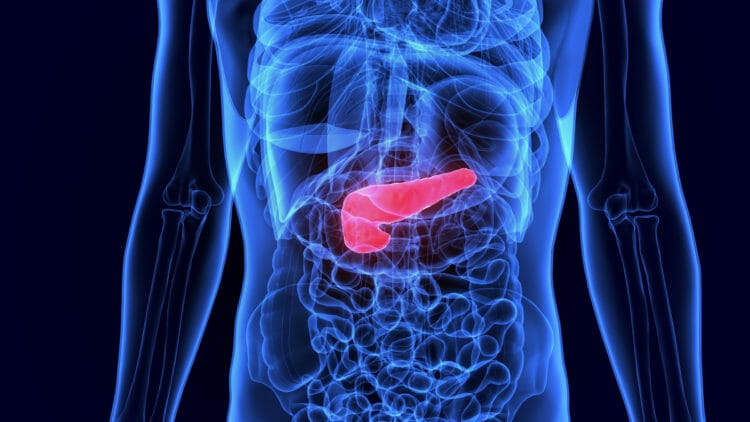
Quite the opposite is the case!
Studies have shown that people who consume a high-carbohydrate diet, or are on an extremely low-fat diet, have a higher risk of developing gallstones.
That might be because if you eat less fat, your body needs less bile to digest food. When the bile stays in your gallbladder, it might form stones.
As a result, eat more fat if you want to decrease your chances of developing gallstones.
8. Saturated Fat and Cholesterol Are Bad for Your Health
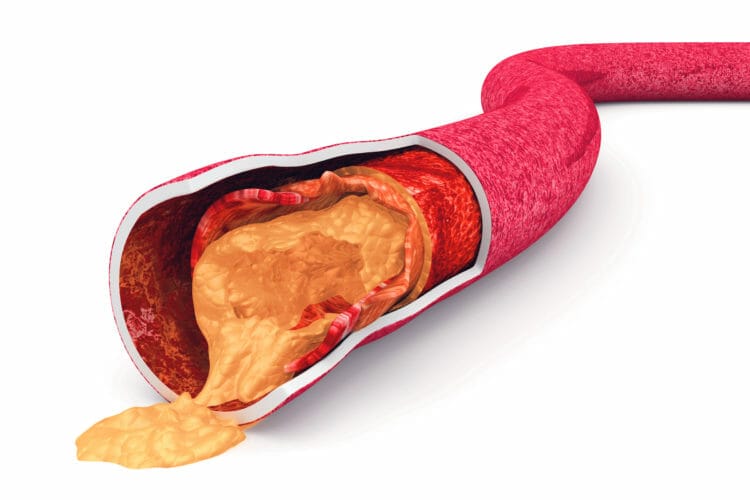
Many people still think that saturated fat and dietary cholesterol increase the risk of cardiovascular disease. That myth, also known as the lipid hypothesis, is not supported by any credible scientific evidence.
Besides the fact that humans have eaten saturated (animal) fat throughout evolution, there are now numerous peer-reviewed studies confirming that saturated fats are neutral from a health perspective.
For many people, eating low-carb diets improves their cholesterol profile, but you might experience higher total cholesterol and LDL levels, especially if you consume a lot of saturated fats.
Unless those numbers are through the roof, that's not necessarily a concern. If your LDL is high, I would ask your physician to order an LDL particle count, which shows how many small LDL particles you have in your bloodstream. Those are usually the ones that increase your risk of developing heart disease, and they are generally caused by eating carbs.
9. Red Meat Causes Cancer
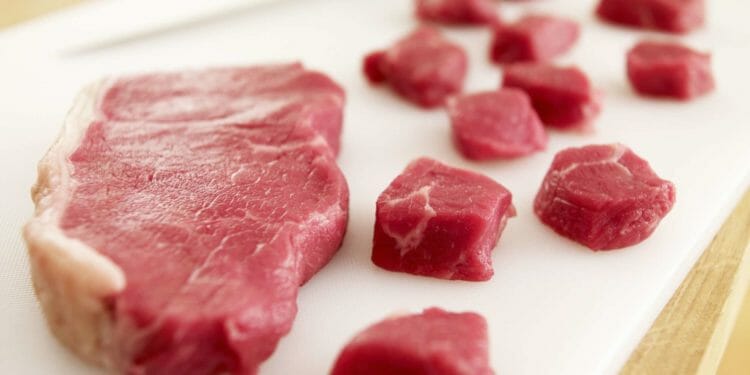
When the International Agency for Research on Cancer (IARC) issued a press release in 2015, classifying processed meat as "carcinogenic" and red meat as "probably carcinogenic," it sent shockwaves through the carnivore and paleo community.
However, it's important to note that most studies on the topic were observational and could only establish a correlation rather than causation.
That's a significant difference! If you observe people who own a TV, you will likely find that owning a TV correlates with a higher risk of having a heart attack later in life, compared to those who don't own a TV.
Does that mean TVs cause heart attacks? Of course not. However, the lifestyle factors of those people who own a TV might (such as sedentary behavior, lousy diet, etc.).
The same is true for red meat and cancer. Keep in mind that humans thrived by consuming red meat throughout millions of years of evolution. So if there were something inherently wrong with consuming red meat, evolution would have taken a different turn.
My recommendation is to reduce the amount of processed meat you eat and purchase pastured meat, if you can.
10. The Brain Needs Carbs
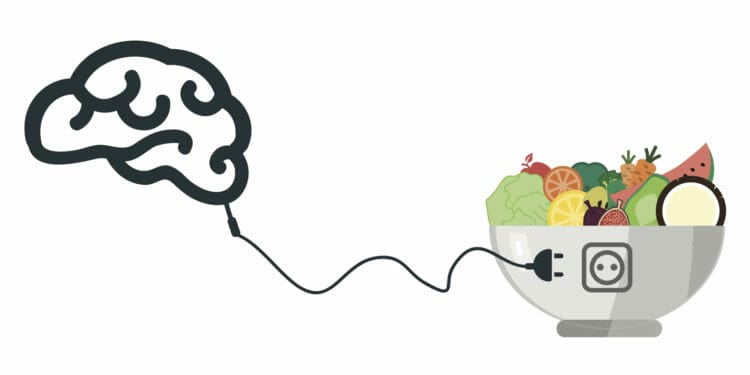
That's simply not true. The brain thrives on ketone bodies (delivered through a mechanism called the blood-brain barrier) as its primary source of fuel. In fact, having too much glucose in your bloodstream can significantly increase your risk of developing certain neurological conditions.
For example, scientists have discovered that Alzheimer's is a condition caused by a problem with your brain's glucose metabolism (glucose uptake) that starts as insulin sensitivity decades before the disease manifests.
Plus, your body can make glucose, if needed, from non-carbohydrate sources in a process called gluconeogenesis.
However, the latter is a relatively expensive process for the body and I no longer believe that you should rely on it for extended periods.
As a result, I've started consuming more carbohydrates than I did during my first two years on keto. These days, I consume up to 150 grams of carbs per day from raw honey and seasonal fruits.
Doing so might temporarily kick me out of ketosis, and that's OK — I don't think you have to be in ketosis all the time if you're metabolically healthy.
11. Keto Doesn't Provide Enough Nutrients
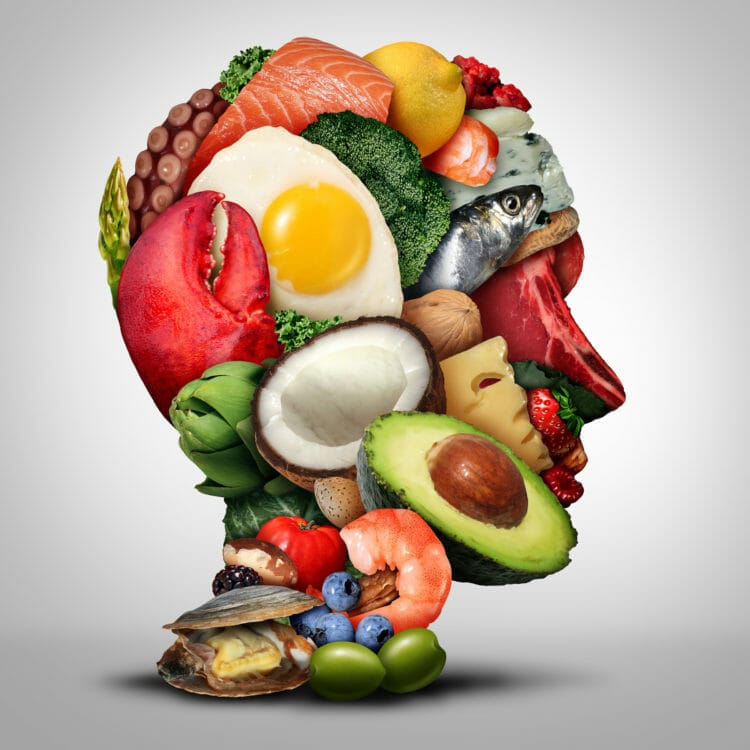
That might be true if you follow a "dirty keto" diet that consists mostly of fatty junk food.
However, if you do keto right — and especially if you follow a ketogenic paleo diet — you'll get all the nutrients you need from meat (especially organ meat), eggs and seasonal fruits.
The most effective way to ensure you're getting all the nutrients your body needs is to incorporate organ meat into your diet. If you don't like how organ meat (such as liver) tastes, I recommend supplementing with freeze-dried organ meats, like as the ones we make at MK Supplements.
12. Keto Can Cause Depression

Some people mistake the symptoms of the keto flu (brain fog, irritability, lethargy) with depression. Additionally, some people may go through a phase of carb withdrawal that might impact their mood.
In either case, by eating enough fat, drinking enough water, and maintaining sufficient electrolyte levels, these symptoms should go away quickly.
With regard to long-term effects, a ketogenic diet likely has a positive effect on your mental health and decreases the risk of developing neurological diseases.
13. You Can't Exercise on a Ketogenic Diet

In sports and physical activity, carbohydrates are fundamental for protecting proteins from degradation during bouts of exercise. Since keto diets are very restrictive in their carbohydrate consumption, is it advisable to exercise while on keto?
If you think exercising during ketosis makes you lose muscle mass, you should know that is a myth.
You certainly can exercise on low-carbohydrate diets, even during the first few days of starting your keto journey.
Studies that have examined keto diets have found that it's still possible to perform strength training and build muscle during ketosis. But if that's your aim, be smart. Don't start your exercise session while you're suffering from the keto flu, and eat enough protein beforehand.
Most importantly, keep an eye on your fluid and electrolyte levels!
Using branched-chain amino acid (BCAA) supplements as a pre-workout boost would be fantastic, as long as you check to make sure there are no additional carbs added into the mix.
As previously mentioned in this article, certain types of exercises are better at leveraging fat as fuel, such as weight-lifting or endurance sports.
High-intensity exercises, such as certain CrossFit WODs or sprinting, benefit from having sufficient glycogen in your body. I'm not a competitive CrossFitter, so I don't bother, but you can undoubtedly increase your carb intake on days when you have a competition or a tough workout.
14. Keto Isn't Good for Your Gut Bacteria
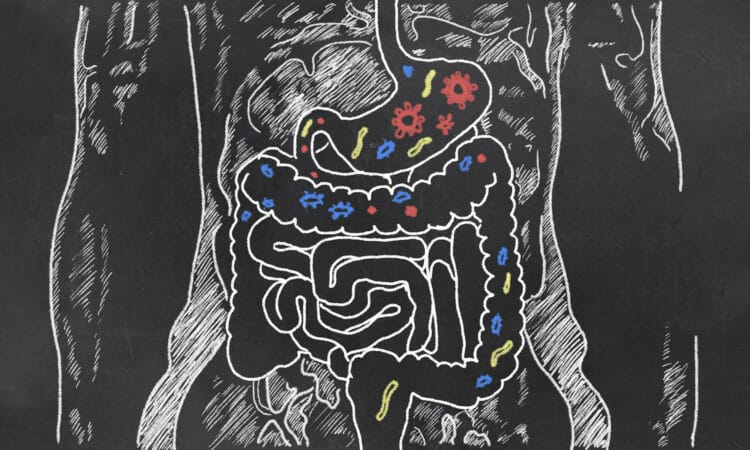
Besides some weak correlation, there isn't sufficient evidence to suggest that a low-carb diet is bad for your gut health.
However, I did see evidence that saturated fat from coconut oil or animal sources is less beneficial for your gut microbiome than, for example, olive oil. That's why I recommend not overindulging in medium-chain triglyceride foods or supplements containing MCTs. Instead, leverage olive oil or avocado oil when cooking.
Other foods that can increase the diversity of microbes in your gut and promote a healthy microbiome include leafy greens, cruciferous vegetables, mushrooms, meat, seafood, eggs, herbs and spices, avocado, etc. In other words, everything that you can have on a ketogenic paleo diet!
15. Higher Salt Intake Increases Your Risk of Heart Disease
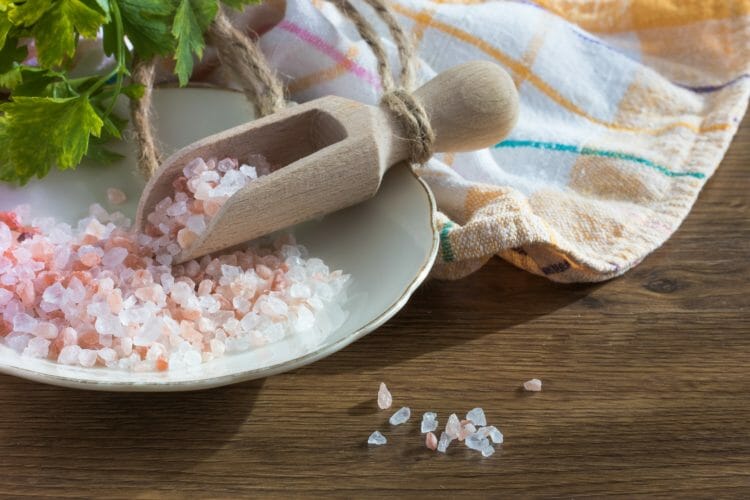
The government recommends Americans consume less than 2,300 milligrams of sodium per day. Consuming more than that, the government says, increases the risk of developing cardiovascular disease.
Similar to the misguided recommendation of reducing the consumption of saturated fat and cholesterol, there is no scientific evidence that high salt intake increases your risk of heart disease.
A 2011 study published in the Journal of the American Medical Association looking at sodium intake and cardiovascular events, such as stroke and heart attack, paints an interesting (and different) picture. The likelihood of health problems was quite high in individuals consuming less than 2g of sodium per day, the lowest rate of events was at about 5g per day of sodium intake. This is more than double what is recommended by the AHA, FDA, and CDC. What is particularly interesting is the study's authors noted that one must get as high as 8g of sodium per day to see the same degree of problems as below 2g per day of an intake!
National Institute of Health
What that means is that you can likely significantly increase your salt intake when you follow a paleo keto diet that consists mostly of fresh and unprocessed foods.
I used to be one of those guys who would never add salt to anything because I thought that keeping my salt intake low would decrease my risk of heart disease. Only when I started on a ketogenic diet did I realize that I wasn't eating enough salt.
16. The Paleo Diet Is Expensive
Unfortunately, eating healthy in the United States can be costly. Just compare the prices of grass-fed meat from local producers vs. grain-fed meat of unknown origin. Similarly, you'll find that baking a paleo or keto cake is more expensive than a traditional cake that uses cheap flour.
It's a sad-but-true fact that nutritious foods tend to be more expensive than junk food.
My wife and I also make most dishes from scratch, including sauces, nut-based pancakes, meatballs, etc. That too is more expensive than buying ready-to-eat/ready-to-cook products that might contain unhealthy ingredients.
However, you can reduce your grocery bill by cooking simple dishes that mimic what our ancestors ate. If you try to whip up fancy dishes that mimic traditional dishes, it can get expensive.
I recommend taking the time to make a paleo meal plan; doing so will help you stay on track without breaking your budget.
17. Keto Diets Are Not Sustainable
Some people claim they have been on keto diets for a very long time; others say it's not possible, and you should cycle in and out of ketosis.
The truth is that maintaining keto diets over a long period of time is possible (although I don't advise doing so). There are studies about individuals sticking with keto for up to 10 years.
However, the most common approach to keto diets is using them to accelerate short-term weight loss, and then transition to a less restrictive (but still well-balanced, nutrient-dense) diet. But that doesn't mean you will have problems if you try to maintain this diet for a couple of months or longer.
If you travel frequently and have trouble keeping up with the keto diet, consider Ample K* or other keto meal replacement shakes.
I was on keto for two years without ever cycling out of ketosis, and I can assure you that it's possible. As I mentioned above, I no longer believe that most people should remain in ketosis for extended periods. But I know from my own experience that it's easily doable.
18. The Paleo Diet Is Low in Calcium
Paleo diets restrict milk and all other types of dairy, which is one of the most reliable ways to get calcium. It's a fact that some people might experience low calcium levels if they're not careful.
While some studies show that broccoli, kale and many other vegetables are reliable sources of calcium, I prefer to get mine from sardines, sockeye salmon and bone meal supplements. The latter is arguably the best source of calcium, but if you don't like chewing on a bone (like our ancestors did), a high-quality supplement is a great alternative.
Here are some other foods that contain more calcium per serving than cow's milk:
- Almonds
- Beet Greens
- Collard greens
- Mustard Greens
- Sardines (with bones)
- Sockeye salmon (with bones)
19. Too Much Protein Kicks You Out of Ketosis

There is a persistent misconception among ketoers that consuming too much protein kicks you out of ketosis.
The idea behind this theory is a process called gluconeogenesis — a method your body uses to convert non-carbohydrates, such as protein, into glucose. People often assume that the more protein you eat, the more glucose your body makes, thus kicking you out of nutritional ketosis at some point.
However, studies have shown that gluconeogenesis is a mostly demand-driven process, not a supply-driven process. That means your body makes glucose at a steady rate, based on its demands, and excess protein gets stored as fat and not glycogen.
That's one of the reasons why protein doesn't impact your blood sugar and insulin levels in any meaningful way.
However, it's worth noting that when your body metabolizes protein, about 8% of it gets converted into glucose — under optimal metabolic conditions. For example, if you come out of a 12 to 16 hour fast and you break it with eggs, a tiny portion of that egg protein will get converted into glucose.

How to Win an Argument With a Paleo Critic
If you follow the news, you've likely heard about "new" studies claiming that plant protein is better than animal protein or that low-carb diets shorten your life and increase the risk of early death.
Any time such news breaks, you might get pushback from family, friends or other critics of ancestral eating habits. My mom always sends me newspaper clippings from her local tabloid in Austria whenever there's new "evidence" that keto and paleo are bad for your health.
If you need some ammo for such conversations, I highly recommend you watch this video and read this article from Chris Kresser, one of my favorite clinicians who explains complex topics very well.
How to Get Into Ketosis — 6 Steps
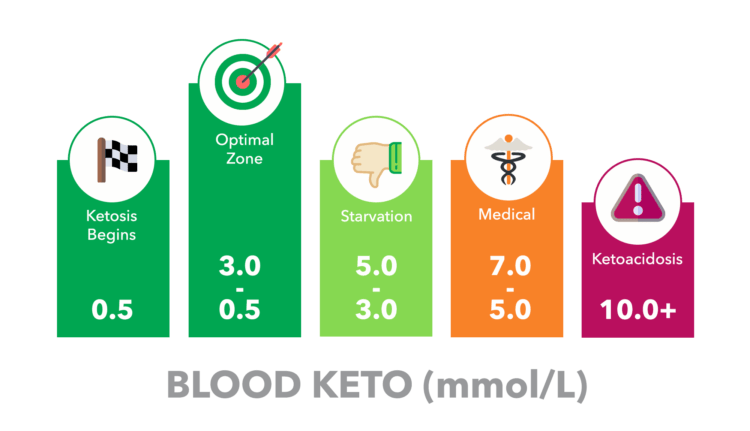
To get into and remain in nutritional ketosis, you need to provide your body with sufficient healthy fats and limit the grams of carbohydrates you consume. As a rule of thumb, 75% of your calories should come from fat, 20% from protein, and 5% from carbohydrates.
But don't get too hung up on these numbers, because everybody reacts differently. I encourage you to experiment with the food you eat while monitoring your blood ketone levels.
1. Restrict Carbohydrates
This one is a no-brainer, but unless you restrict your carbohydrate intake, your body won't be encouraged to start using fat for fuel.
Instead of "easing in," I would go cold-turkey and significantly reduce your carb intake from day one. That's one of the fastest ways to get into ketosis.
Total Carbs vs. Net Carbs
When I say you need to restrict your carb intake, I'm referring to net carbs. What does that mean?
You can easily calculate the net carbs of a food by subtracting fiber and non-caloric sweeteners (i.e., sugar alcohols) from the total carbs. For example, one medium head of cauliflower has 29 grams of total carbohydrates, including 12 grams of fiber. Since the body cannot use fiber for energy, you can subtract 12 from 29. The result is 17 grams of net carbs.
So keep in mind that all carbohydrates recommendations on a ketogenic diet refer to the net carbs, not the total carbs of a food.
2. Fast Intermittently
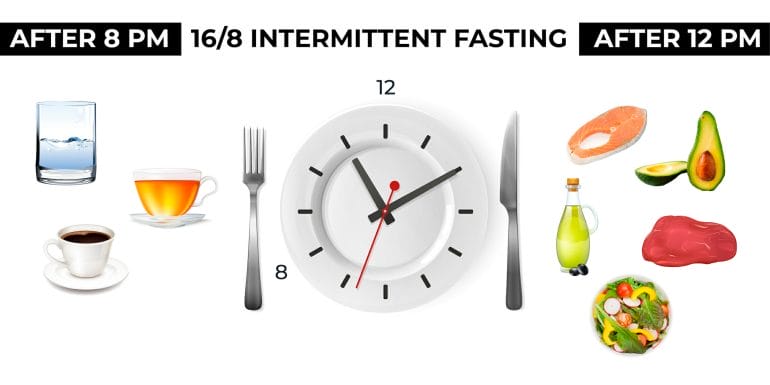
In addition to cutting back on carbs, you can also start an intermittent fasting routine, such as the 16/8 method. By doing so, you'll likely get into ketosis much quicker than otherwise.
When I started keto, I paused my intermittent fasting routine until I figured out my calorie intake and electrolyte levels. However, looking back, I don't think that was necessary.
In fact, I highly encourage you to combine intermittent fasting with a paleo keto diet to reap the most benefits. Just don't be afraid to eat (a lot) during your "eating" window and make sure you add enough salt to your meals.
During your fast, make sure to stay away from anything that has calories — that includes exogenous ketones or other supplements. I usually only have water, black coffee or tea while fasting.
3. Eat Enough Fat
Your body needs fat to make ketone bodies. As a result, you need to eat enough dietary fat to get into ketosis. As far as conversion of fat into ketones is concerned, not all fats are created equal.
For example, certain fatty acids and medium-chain triglycerides — such as caprylic acid (C8, a medium-chain triglyceride) — are easier for your body to convert into ketones than other fats. That's why you see so many MCT oil supplements on the market.
4. Control Snacking
Sometimes, a registered dietitian recommends eating frequently throughout the day. However, from a health perspective, that's not only unnecessary but potentially counterproductive.
Instead, I recommend that you eat only when you're hungry and not because you're used to it. If you snack, avoid carbs and protein and stick with keto-friendly options that are high in fat.
5. Exercise
While exercise is not necessary to get into ketosis, studies have shown that any type of physical activity can increase your ketone production. Plus, it helps with burning fat and the treatment of Type 2 diabetes.
6. Sleep Enough
Sleep is an important factor in managing stress.
Why is that important?
Besides the fact that stress is bad for your health, stress hormones also raise blood glucose levels, thus slowing down ketosis. So make sure you get at least seven to eight hours of sleep each night.
How Do You Know If You're in Ketosis?
Besides noticing some of the symptoms and side-effects of ketosis, such as the infamous keto breath, the most reliable way to find out is via a test.
You can test if you're in ketosis via one of the following methods:
- Urine strips (convenient but not accurate)
- Blood-ketone meters (moderately accurate and invasive)
- Breath-ketone analyzer (most accurate and non-invasive)
1. Urine Strips
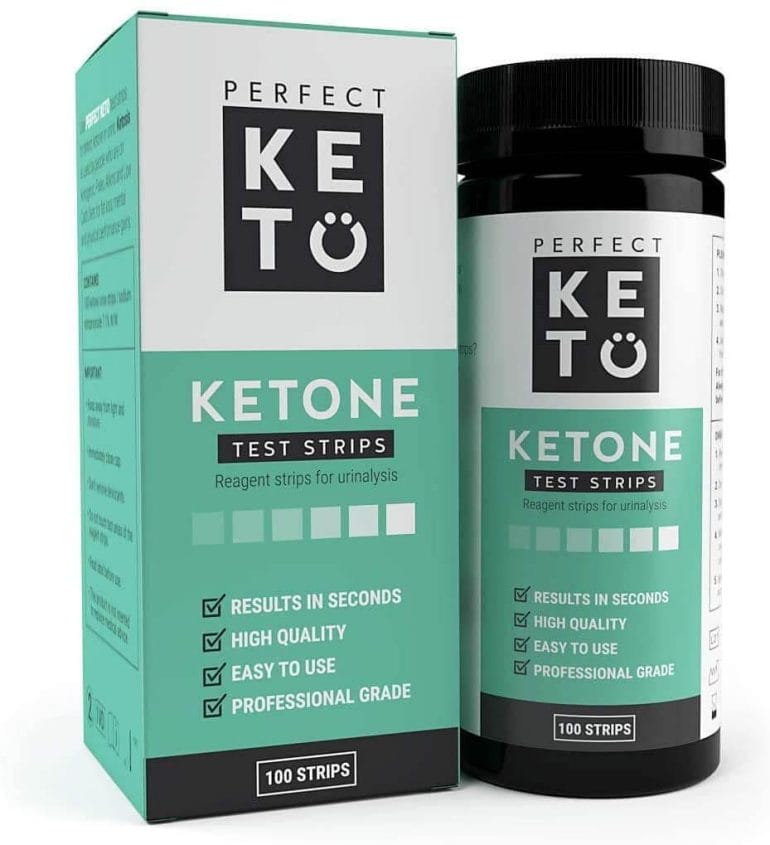
One of the easiest and least expensive ways to test for ketosis is urine strips. When I started with keto, I bought a set of test strips*, and I tested every time I went pee.
While urine tests are cheap and convenient, they don't show a precise ketone reading — only a color indicator. Plus, depending on how much fluid you drink, your urine might be diluted, thus skewing the results.
Additionally, once you're keto-adapted, your body might stop leaking ketones via urine, thus resulting in lower readings.
2. Blood Ketone Meters

Using a blood-ketone meter is a reliable and moderately accurate way of measuring ketone bodies. Plus, many meters can also measure your blood glucose levels. The one I have also tells me my hemoglobin and hematocrit levels, and it syncs with my smartphone.
The downside of blood ketone meters is that they are expensive in the long run because you have to keep buying test strips. Plus, they are not 100% accurate and invasive.
The good news is that once you have your keto diet dialed in, you won't need to measure every day. I know what I can eat to remain in ketosis, and I only do spot checks every couple of days.
3. Breath Ketone Analyzer

Another popular and non-invasive way to find out if you're in ketosis is via a high-quality breath ketone analyzer.
While many consumer-grade breath ketone meters don't show you an exact ketone reading, Biosense (the device I use), is incredibly accurate and shows you how much acetone you have in your lungs. While breath analyzers are relatively expensive, they offer unlimited use and thus have a higher return on investment than blood-glucose meters.
Nutritional Ketosis vs. Ketoacidosis
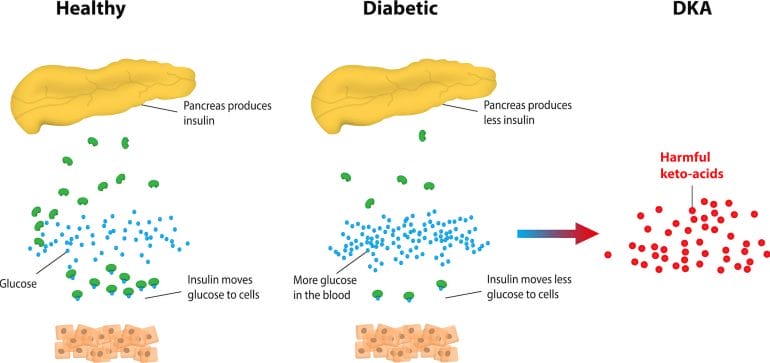
It's essential to understand the difference between nutritional ketosis and ketoacidosis.
Nutritional ketosis is a normal metabolic process in which your body uses ketone bodies for fuel instead of glucose.
Diabetic ketoacidosis is a potentially life-threatening condition in which blood sugar and ketone levels rise to critical levels. That can happen in people with Type 1 diabetes if they don't take insulin.
If you're healthy and your pancreas is working correctly, it's unlikely that you can trigger ketoacidosis, even if you starve yourself. That's because your pancreas will release insulin if blood ketone levels rise above a certain level. Only when your pancreas is unable to produce insulin can you get into ketoacidosis.
For reference, nutritional ketosis begins at 0.5 mmol/L, and ketone levels usually stay below 5 mmol/L. If you starve yourself, you may reach levels of 6-9 mmol/L. Anything beyond that is considered dangerous.
Top 11 Keto Tips and Tricks
Below are the top keto tips and tricks that have helped me get into and remain in ketosis. I've also included a section for everyone who wants to try a vegan ketogenic diet (which is a healthier alternative to a standard plant-based diet).
1. Don't Be Afraid to Skip Breakfast
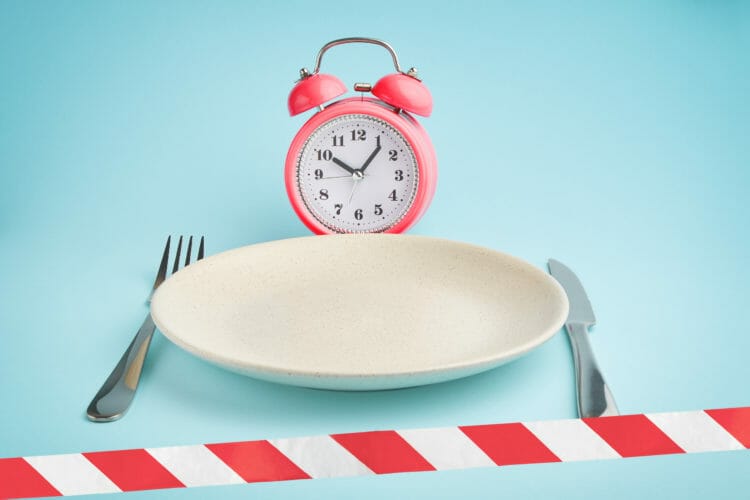
Unlike what you might have heard, breakfast isn't the most important meal of the day. Humans throughout evolution have eaten meals based on food availability without taking the time of day into account.
Also, the food you eat for breakfast doesn't have to be any different from what you have for lunch or dinner. Modern humans have come up with the concept that breakfast has to be different and consist of eggs, cereal, pancakes, etc. A caveman living in the Stone Age had no such preconditions.
There is no scientific rationale behind the concept of "breakfast foods," so feel free to have meat, vegetables, or any other healthy food for breakfast. Make a meal plan that you enjoy, and that's sustainable based on your lifestyle and schedule.
If you're not hungry, skip a meal and embrace intermittent fasting!
2. How to Increase Your Fat Intake
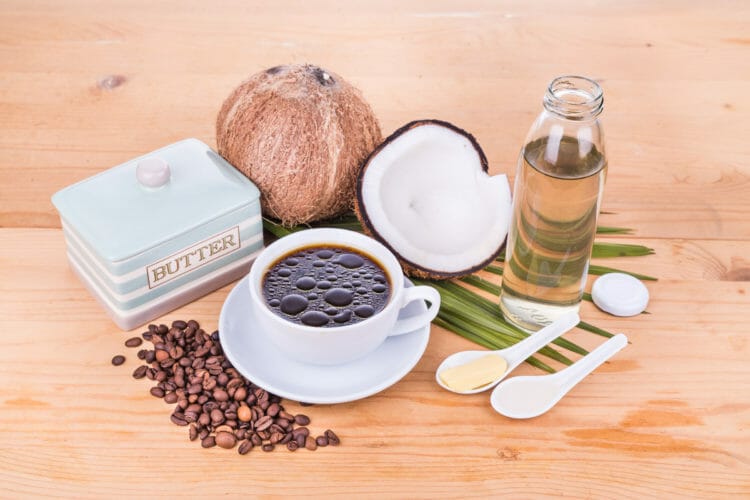
If you're not used to cooking with a lot of fat, you might have a hard time getting enough fat into your new meal plan.
My recommendation is to drop the thought that fat is unhealthy and, instead, use oils liberally when cooking eggs, meat, vegetables or other dishes.
If that's not enough, prepare high-fat snacks such as chia puddings, or add pastured, grass-fed butter or MCT oil to your coffee.
Additionally, there are plenty of snacks and beverages that can help fill the gap. Check out my keto products page for some inspiration. You can also find many cookbooks that feature keto recipes*.
3. Bread and Keto

I'm from Austria, and we grew up eating bread almost every day. Since I started with a paleo diet a few years ago, I've barely had any real bread. My wife occasionally made paleo bread, but since I started keto, that option went out the window due to the high carb content of baked goods.
If you must have bread but don't want to get kicked out of ketosis, I have good news for you! There is at least one brand that makes bread that's paleo, keto and vegan. Check out my keto products page for more information!
4. Dining Out
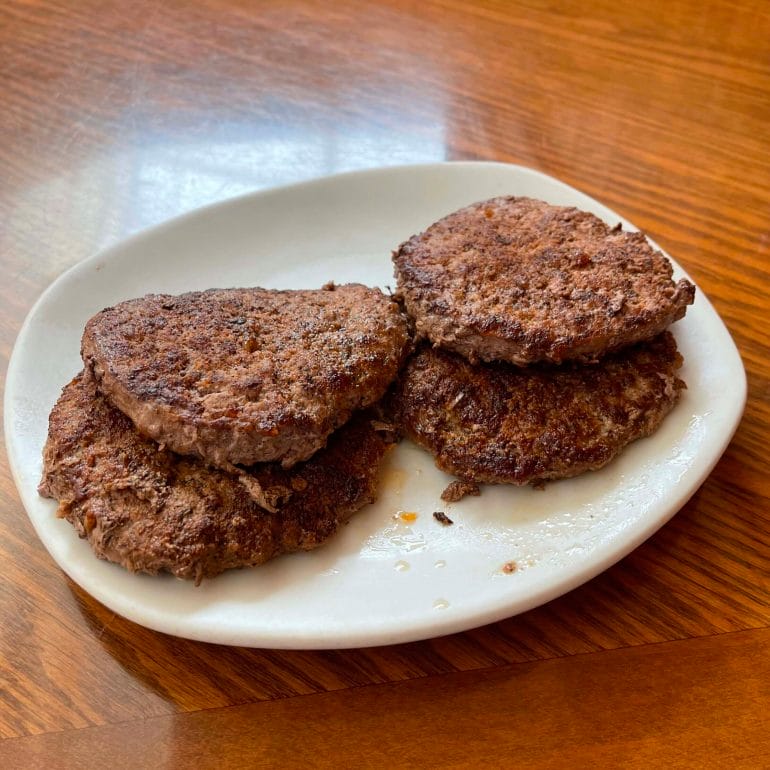
As I mentioned in my guide to healthy eating while traveling, I try to plan ahead. That means I carefully pick the restaurants I plan on eating at to make sure they offer compatible food options.
That might sound like a hassle, but it hasn't been a big deal for me. The good news is that you can usually get a piece of meat and some low-carb vegetables in most restaurants.
If I feel like the meal I order doesn't have enough fat, I ask for extra virgin olive oil on the side. In some rural areas of America, you might not find olive oil in restaurants, so I try to carry a small pouch or bottle of ghee or olive oil in my backpack.
5. Cheat Meals

Cheat meals used to be pizza or a slice of cake at a party. These days, I cheat with cauliflower pizza (with goat cheese) or healthy keto snacks that won't kick me out of ketosis.
I just don't see the point of eating something entirely unhealthy, knowing that there are so many healthy and delicious alternatives.
As a result, I recommend grabbing a keto bar or a keto cup when you feel like you have to cheat.
6. Avoid Highly-Processed "Low-Carb" Products

The goal of a healthy diet is to eat real food and to stay away from highly- processed garbage that's filled with artificial flavors, sweeteners and fillers.
Unfortunately, the low-carb movement has caused an entire industry to flood the market with junk food that's marketed as low-carb.
For example, Atkins and Slim Fast, some of the most popular brands, offer nothing but junk food that should be avoided like the plague.
7. Keto Meal Replacement Drinks

If you travel a lot or work in an office that doesn't have any decent restaurants nearby, you might want to consider keto meal replacement drinks.
8. Keto Meal Delivery Services

Meal delivery services are an excellent choice if you don't have the time or desire to cook, but you don't want to eat out all the time. A while ago, I reviewed the top paleo meal delivery services, and many of them offer delicious keto options.
9. Meal Planning
If you like to cook meals at home but have no clue where to start, a ketogenic paleo diet plan can come in handy.
My wife uses an app called eMeals* that offers various keto and paleo diet recipes and meal plans. I also recommend checking out the resources section at the bottom for my favorite cookbooks, magazines and trade shows related to paleo and keto.
10. Keto While Traveling
Maintaining any diet when you have full control over the food and its ingredients is easy. However, it becomes more difficult if you have little or no control over your food's ingredients or preparation.
Most people who I talk to and who travel a lot tell me that eating out is one of the major factors that impacts their dietary goals.
I also travel a lot for work, and while I agree that I eat less healthy while on the road compared to when I eat at home, travel has never derailed my diet.
That's because I prepare accordingly. You can learn more about that in my article about healthy eating while traveling. However, here are some tips, specifically for followers of a keto paleo diet:
- Think about where you're going and what sources of food you'll have there.
- Pack healthy and keto-friendly meal replacement drinks.
- Stock up on healthy and keto-friendly snacks, such as meat bars, keto bombs, MCT oil, etc.
- Consider buying travel-sized condiments, such as olive oil, mayo, real salt, ghee, etc.
- When you eat out, keep it simple: protein + veggies or a salad, soaked in olive oil or another healthy source of fat.
When I go on a trip, I always bring the following:
- Ample K – ketogenic meal replacement drink (600 calories per bottle)
- Wild Zora Meat & Veggie bars
- Bulletproof Brain Octane (travel-sized)
- Kasandrino's Extra Virgin Olive Oil (travel size)
- 4th & Heart Ghee Butter (travel size)
- Chosen Foods avocado oil mayo (travel size)
- Super Fat Nut Butters (single-serve pouches)
That way, I can either enjoy a full meal (Ample), a snack (Wild Zora), or I can fatten up any meal or beverage I find on location. For discount codes to any of these products, check out my dedicated keto products page.
11. Plant-Based Keto
Keto and paleo diets usually assume that you're an omnivore and that you eat meat and other animal products. However, what if you're a vegan or vegetarian and would like to enjoy the benefits of a ketogenic diet?
The good news is, it's possible to maintain a vegan keto diet if you can figure out your protein intake. On most vegan diets, protein comes from plant-based sources such as grains and legumes, which are high in carbohydrates and thus not keto-friendly.
My recommendation is to keep tabs on your ketone levels to figure out how many carbs you can get away with when consuming traditional plant-based sources of protein. You can also experiment with nuts that are low in carbohydrates and add vegan protein powders to your diet.
I reviewed some of these protein powders in the past, and recommend pea or rice protein. However, I'd stay away from soy-based products, which are often highly-processed and thus unhealthy.
The primary issue with a plant-based diet in general is that it goes against what our bodies have evolved to eat: animals. Cutting out animal products from the equation means that you'll have to make sacrifices and use supplements that will likely have a negative impact on your health in the long-run. However, if that's what aligns best with your moral compass, I encourage you to get creative and figure out what works best for you.
Plant-based keto is certainly doable — it's just more complicated and less sustainable than a traditional ketogenic diet.
Keto Supplements
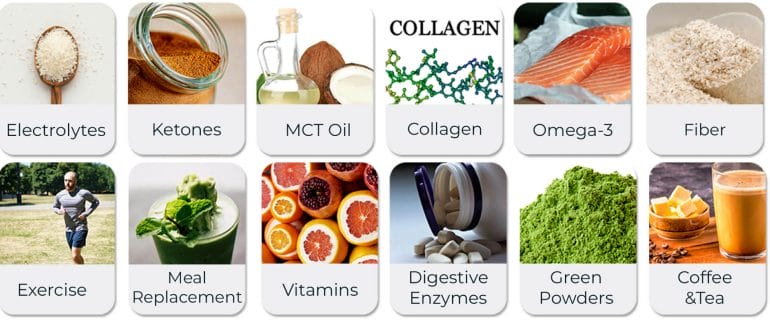
Supplements are a useful tool to make your ketogenic lifestyle easier — especially during the first few weeks of your keto journey. I have written an in-depth article reviewing various types of keto supplements and explaining how they can help you.
Here are the top supplement categories you should consider:
- Electrolytes (salts)
- Keto shakes
- Exogenous ketones
- Keto Meal replacement drinks
- MCT Oil
- Keto (collagen) protein powder
- Omega-3 fish oil capsules
- Fiber
- Workout supplements
- Vitamins and minerals
- Digestive enzymes
- Green powders
- Coffee and tea
Keep in mind that supplements — as the name implies — are meant to supplement an otherwise healthy lifestyle. Don't mistake them for shortcuts to replace real food.
Top 14 Keto Mistakes
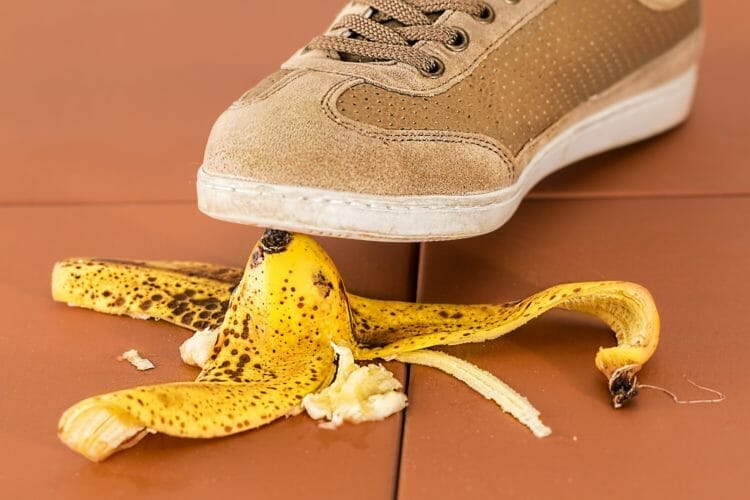
Below is a list of mistakes many people who are new to the ketogenic lifestyle make. Don't be too hard on yourself! I made many of these mistakes when I first started on keto.
1. Not Eating Enough Healthy Fat
To get into and remain in ketosis you need to eat a lot of fat. Your goal should be to get 70% to 75% of your calories from healthy fats, including meat, seafood (wild-caught fish is a great keto option), avocados, olive oil, ghee, coconut oil, etc.
2. Not Eating Enough (Calories)
Besides keeping tabs on your fat intake, make sure you consume enough calories. So eat until you feel satisfied and keep in mind that starving yourself or maintaining a caloric deficit are not sustainable.
Also, you don't have to count calories on a ketogenic diet to lose weight. If you eat healthy and wholesome sources of food, your body will take care of the rest.
The idea behind ignoring calories is that not all calories are created equal. Once you've realized that, the principle of calories-in, calories-out quickly falls apart. To learn more about that and why you shouldn't worry about calories, check out this article from Time magazine.
3. Giving Up Too Soon
Changing your diet overnight can be tough, especially if your new diet doesn't initially make you feel great.
But regardless of whether you're suffering from carb withdrawal, the keto flu or minor GI issues, I encourage you to hang in there and increase your intake of fluids, electrolytes and fiber, if necessary.
Additionally, make sure you're physically active and get enough sleep. If you do, you'll feel better in no time!
4. Not Getting Enough Electrolytes
Not getting sufficient sodium, potassium and magnesium is arguably one of the most common mistakes people make when starting a ketogenic diet.
I made the same mistake because I was afraid of eating too much salt. Once I took care of my electrolyte levels, I started feeling great and didn't have to pee as often.
5. Not Drinking Enough Water
Much like maintaining proper levels of electrolytes, it's also essential to drink enough fluids in the form of water, tea, or even black coffee.
Keep in mind that while your body adapts to a ketone-based metabolism, you'll urinate more often. That's why it's so important to keep an eye on your water and salt intake.
6. Avoiding All Fruits and Vegetables
While you want to consume fruits and starchy vegetables with a high glycemic index only in moderation, don't make the mistake of cutting out those food groups entirely.
7. Overeating (Fatty) Junk Food
While a high fat intake is the primary goal of the ketogenic diet, it's crucial that you achieve that goal with healthy fats.
Junk food that's high in industrial vegetable oils can cause significant harm in the long run by modulating inflammatory pathways in your body.
8. Not Getting Enough Sleep
If you don't get enough sleep, your body might release more stress hormones, which can increase your blood glucose levels. So make sure you get at least seven to eight hours of shuteye.
9. Not Exercising
Physical activity decreases stress and can increase your ketone production. Plus, it can help with fat loss!
10. Eating Too Many (Processed) Keto Treats and Other Sweets
Keto treats are great if they're minimally-processed and don't contain any artificial ingredients. However, keep in mind that your goal should be to eat mostly real food. Treats should be the exception and not the rule.
11. Getting Most of Your Fat From MCT Oils
MCT oils are a convenient way to boost your fat intake and support ketosis. However, consuming too many of these medium-chain triglycerides can upset your stomach. I experienced that myself when I sampled all the keto products I received leading up to my keto supplements post.
If you enjoy liquid fat calories, I encourage you to mix it up and increase your intake of olive and avocado oil. Both have more unsaturated fats that are easier on your stomach.
12. Drink Too Much Alcohol
I know you can get away with having a few glasses of wine and still stay in nutritional ketosis. However, I strongly encourage you to consume alcohol in moderation because too much isn't good for you.
You should definitely stay away from sugar-laden cocktails, as they will kick you out of ketosis and cause an insulin response.
13. Turn Food Into a Stress Factor
Preparing food and eating it should be a joyful experience. However, following a "special diet" can quickly turn food into a stress factor — especially if you and your partner aren't on the same page.
My whole family, including my wife and kids, have been doing paleo for years, and have enjoyed it. However, when I got more serious about keto, my wife got stressed because she's the one preparing most of our meals and she had enough on her plate already (pun intended) without worrying about my new macros.
So it's important to talk about the changes you want to make and to offer some flexibility. For example, my wife and I agreed that she could keep cooking as always, and I'd just omit certain foods that were high in carbs. After a few weeks we both realized that our meals were already 90% keto, and a few minor adjustments got them to where we wanted them to be.
When eating out with friends or family who might know little (or not care) about healthy eating, I usually keep my opinion to myself (unless I'm asked).
Coincidentally, CrossFit and keto has helped me to develop a body composition that speaks for itself. That might sound arrogant, but evidently, what I'm doing is working. I'm fit and I'm healthy — and that deters people from making snarky comments and telling me that my diet is a fad.
14. Don't Be Prepared (When Eating Out)
When you plan on eating out, think ahead and look up the menu to make sure the place has food that's compatible with your dietary lifestyle.
When a new Mexican restaurant opened in our area, we decided to check it out. We figured we could always get protein and avocado or guacamole.
Unfortunately, most of the dishes they offered were smothered in rice, beans and sugar-laden sauces. Don't assume, but verify that where you're planning on going offers food that you can have.
Ketogenic Diet vs. Paleo Diet: How They Differ
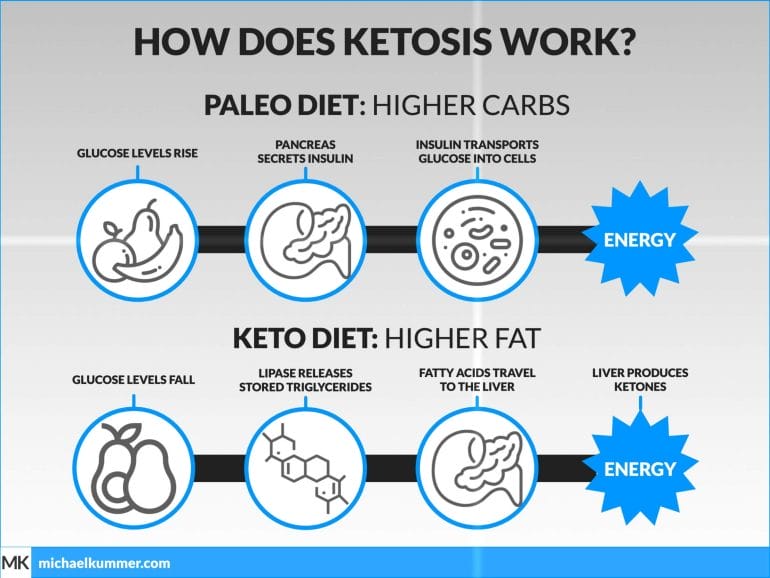
Both paleo and keto are low-carb diets that encourage eating plenty of non-starchy vegetables and animal protein. They do not allow refined sugar and many processed foods, they rule out grains and legumes, and they increase the intake of healthy fats from coconut oil, avocados, olive oil, nuts and seeds.
Both diets aim to achieve weight loss and prevent cardiovascular and metabolic problems through a low-calorie diet comprised of nutrient-dense foods.
However, these diets have some significant differences, not only in the foods they allow and restrict but also in their application and sustainability.
The first major difference between the two is dairy. Keto, which is primarily a high fat diet above all else, allows milk, cheese, grass-fed butter, yogurt, and other milk derivatives. The paleo diet does not, because dairy products were not available during the Paleolithic era.
At the same time, paleo diets allow for a few additional sources of carbohydrates, like fruits, natural sweeteners such as honey and maple syrup, and starchy vegetables (as in beets and sweet potatoes). Conversely, the keto diet prohibits all sweeteners except stevia and monk fruit, which provide no additional carbs.
The most significant difference between these two approaches is that keto diets aim to burn fat through ketosis by reducing carbohydrate intake to the absolute minimum. This means that if you choose to go the ketogenic route, you'll need to maintain the specific proportion of macronutrients required by your body to enter ketosis (roughly 75% fats, 20% proteins, and 5% carbohydrates).
You might also need to test* your ketone levels on a regular basis to ensure you're in ketosis (because that's the metabolic goal of this diet). On the other hand, the paleo diet does not require maintaining a strict proportion of macronutrients, which makes it easier to follow and sustain over the long haul.
Paleo vs Keto: Which One Is Better?
So, after going through the basics of the keto and paleo diets, comparing them, and clearing up some of the myths and facts, the question remains: Which one is better? The answer depends on what you're looking for.
The keto diet is fantastic if you're looking for a fast way to lose weight, and especially if you're trying to control your blood sugar, suffer from insulin resistance, polycystic ovary syndrome, seizures in children, or any of the other health problems outlined in this article. In these cases, the keto diet will not only reduce your weight but also improve your underlying condition.
On the other hand, you might want to opt for the paleo diet if you need a more straightforward approach, or if you live a busy life and don't have much time to keep track of your fat intake.
Many people can sustain the paleo diet more efficiently. Plus, it will help you learn the art of healthy eating — just know that when it comes to weight loss, you won't see results as fast as with the keto diet.
In both cases, getting started may become a challenge, especially if you're surrounded by non-dieters who want to take you back to your previous eating pattern. So, always remember this might be the start of a new journey, and the results will depend on your enthusiasm and commitment.
And keep in mind that when it comes to the paleo vs keto debate, you don't actually have to make a choice between the two. As this article has argued, both approaches are healthy and compatible.
Why I Ended My Keto Experiment After Two Years
As I already mentioned throughout this article, I decided to end my keto diet experiment after over two years of consuming less than 10 grams of net carbs per day.
That doesn't mean I no longer believe in the benefits of being in ketosis (for short periods), but I no longer think that I have to permanently abstain from carbohydrates to be healthy.
In fact, I've realized that being on keto for such a long time negatively impacted my health and caused the following issues:
- Low testosterone levels.
- Low thyroid hormone levels.
- Chronic electrolyte imbalance.
- Frequent muscle cramps.
- Sleep impairments.
- Heart palpitations.
In addition to these issues, I also realized that polyunsaturated fatty acids, and linoleic acid in particular, was much more likely to cause insulin resistance and metabolic issues than clean carbohydrates such as raw honey and seasonal fruits.
As a result, I adjusted my diet and went from a strict ketogenic diet to a low-carb diet consisting of 150 grams or less of carbohydrates per day.
After doing so, my testosterone, thyroid and electrolyte levels normalized and my sleep improved. I still consume more sodium than the USDA recommends, but I no longer suffer from muscle cramps or heart palpitations on days that I don't.
Overall, I feel much better than how I felt during my last few months on keto, and my exercise performance has improved dramatically. I've also gained a lot of lean muscle mass, leading to a dramatic increase in strength.
However, I still practice intermittent fasting and I do have super low carb days to make sure my metabolism remains flexible and capable of using ketones for fuel in the absence of glucose.
Frequently Asked Questions
Below is a list of questions I hear a lot from people who are new to the ketogenic diet.
Is a keto diet safe?
It absolutely is, as I have explained throughout this article.
How much weight will I lose on a keto diet?
That depends on how much "extra weight" you have, among other factors. However, keep in mind that the initial weight loss many people experience after starting a low-carb diet is likely due to a loss of water and not body fat. Sustainable, long-term weight loss will require a degree of commitment and take longer.
How long does it take to get into ketosis?
That mainly depends on the elasticity and flexibility of your metabolism. For some people, it may take up to a few days to get into ketosis. One of my CrossFit buddies told me that it takes him up to five days to get into ketosis. He's on a cyclic ketogenic diet, which means he cycles in and out of ketosis every few days.
For reference, my wife and I have been intermittently fasting for several months, and while she does only paleo (not keto), she's in ketosis every morning before she breaks her fast. When I started keto, I was in ketosis on Day 1 (probably because of my fasting).
How do you know when your body is in ketosis?
You have to measure your ketone bodies using a urine strip, a blood-ketone meter, or a breath analyzer.
How many carbs can you have on the keto diet?
As a rule of thumb, you should get 5% of your calories from net carbs. That means if you eat 2,000 calories per day, 100 calories should come from carbs. One gram of carbs has 4 calories. That means you can have approximately 25 grams of carbs (net) per day.
How do I track my carb intake?
You can write down what you eat or use an app. However, I'm not a fan of counting macronutrient amounts, mostly because I don't have time to do it.
Instead, I simply stay away from very starchy and sugar-laden foods, and I eat everything else.
How long should I do a keto diet?
Until you're metabolically flexible and your body can easily switch back and forth between using carbs and fat for fuel. Once you're metabolically flexible and healthy, feel free to cycle in and out of ketosis as you see fit. I've been doing this for the past few months and feel great with it.
Just avoid the mistake of doing keto for a few months and then returning to a standard American diet. Healthy eating has to become a lifestyle in order to reap its positive long-term effects and health benefits.
If I want to burn fat, shouldn't I eat less fat?
Low-fat diets became popular after the so-called lipid hypothesis gained traction several decades ago, fueled by the misguided support of governments worldwide. Based on flawed and biased studies, the idea was born that dietary cholesterol (delivered primarily via saturated fat) is the main cause of cardiovascular diseases.
As a result, the U.S. government changed its dietary guidelines to advise its citizens to adopt a low-fat diet. The food industry quickly reacted, removing fat from its processed foods and replacing it with sugar and other processed carbs. Despite the fact that Americans have been following the guidelines and have significantly increased their intake of carbs (and especially of grains), rates of metabolic diseases have skyrocketed.
Even today, the American Heart Association states on its webpage:
"Eating foods that contain saturated fats raises the level of cholesterol in your blood. High levels of LDL cholesterol in your blood increase your risk of heart disease and stroke."
However, the science is clear: saturated fat does not increase your risk of heart disease.
On the flip side, a low-fat diet means high-carb or high-protein — both contributors to high blood glucose levels that significantly increase your risk of inflammation and the development of metabolic diseases (such as heart disease).
Supplements are expensive — what can I do?
While keto supplements can help to fill specific gaps in your diet temporally, they're not a must-have. Your goal should be to get all the nutrients your body needs from real food. So don't expect to be spending hundreds of dollars per month on supplements.
Do you have to eat high fat on a low carb diet?
If your goal is simply to develop a better overall diet plan in order to live a healthier life, then reducing your carbohydrate intake is a good idea, even if it doesn't put you into ketosis. Most of us consume more of that particular macronutrient than we need, and most of us would benefit from modifying our diet plan to incorporate a wider variety of locally-sourced, nutrient-dense foods.
However, the ketogenic diet works by limiting your carbohydrate intake to the bare minimum and nudging your body into the biological state where it uses fat —rather than glucose — for fuel. That's the reason why keto dieters have such great success in burning fat.
But it should go without saying that your body does need a source of fuel, whether that's glucose or ketone bodies from fat. Thus, if you're cutting carbs as dramatically as required on the standard ketogenic diet, you need to make sure your diet has a high fat proportion.
Do you have to count calories while on keto?
As I discussed in my article about intermittent fasting, reducing your caloric intake has only limited benefits — assuming, of course, you're not feeding your body more calories than it needs.
There are also limited, and perhaps zero, benefits to depriving your body of calories while on a ketogenic diet. Plus, starving yourself is not sustainable. Both keto and intermittent fasting are.
There is no need to count calories while on keto. Just eat when you're hungry and stop when you're satisfied.
What are the key differences between keto and the Atkins diet?
The main difference between keto and the Atkins diet is that the latter re-introduces higher carb limits after a period of time. So it starts as a keto diet but then transitions into a low (or lower) carb diet that can include up to 100 grams of carbs per day.
Atkins leverages the principles of ketosis for weight loss. Once you have reached your goal weight, you can eat higher amounts of carbs (~100 grams per day), as long as you maintain your weight. Of course, at that point you're not in ketosis anymore, and you won't get any of the benefits of a ketogenic diet besides the initial weight loss. In my opinion, that should be seen as a side effect of a healthy lifestyle and should not be the primary goal of your dietary change.
Atkins has three protocols you can start with: Atkins 20, Atkins 40, and Atkins 100.
The number associated with each protocol represents the grams of carbs you can have per day. Depending on how overweight you are, you get placed into one of those three buckets. With keto, people of all weights consume about the same proportion of dietary fat.
What are the key differences between keto and high-protein diets?
The ketogenic is not a high-protein diet. Rather, it's a high-fat diet that includes only moderate amounts of protein. The idea is to prevent the body from converting excess protein into glucose.
However, studies have shown that gluconeogenesis, the process of converting protein into glucose, happens at a stable rate. As a result, I don't restrict how much protein I eat.
Can you eat too much protein on keto?
There is a lot of conflicting information out there regarding the amount of protein you should eat on a ketogenic diet.
Many claim that too much protein can kick you out of ketosis. However, there's no scientific research that shows that excess protein can cause a spike in blood sugar levels and kick you out of ketosis.
Isn't keto just another fad diet?
Fad diets promise quick solutions to weight-loss and other lifestyle problems, without requiring a lot of effort. More importantly, fad diets usually lack scientific evidence and/or the test of time. Keto and paleo, on the other hand, are both supported by scientific evidence and have been proven safe and effective throughout human evolution.
Are hard-boiled eggs healthier than regular eggs?
This question gets asked by keto dieters because eggs are often a go-to food and hard-boiled eggs are exceptionally convenient.
The answer depends on what you mean by "regular" eggs. Hard-boiled, or otherwise fully-cooked eggs, make sure there are no pathogens in the egg that could make you sick. That's why it's advisable to fully cook your food if you don't know where it came from.
Of course, any time you apply heat to raw food you risk damaging some of the nutrients, such as heat-sensitive vitamins. While I like hard-boiled eggs, I prefer a soft yolk of pastured eggs that offers the maximum amount of nutrients.
Why do I have to increase my sodium intake on keto?
The ketogenic diet lowers your insulin levels, which causes increased excretion of sodium and potassium. That effect is amplified when you sweat while working out. As a result, you have to increase your intake of sodium and other electrolytes, such as potassium and magnesium, while you're on a keto diet.
Why am I urinating more often on keto?
The reason for that is (again) your low insulin levels, which also reduce levels of a hormone called ADH. ADH controls sodium retention, and when that hormone is low, you excrete more salt in your urine.
Can fruits and vegetables kick me out of ketosis?
Absolutely — especially fruits that have a lot of sugar, and starchy vegetables like sweet potatoes and carrots. While you might get away with consuming lower amounts of these foods, I recommend non-starchy vegetables and fruits with a low glycemic index, such as berries.
Is there a low-carb high-fat version of the paleo diet?
Yes! That's precisely the diet I'm on. I stick to foods that are allowed on the paleo diet but maintain the macronutrient profile of the standard ketogenic diet.
Are low-fat diets healthier?
Based on everything we know about our evolution over the past 2.6 million years, humans have thrived on a high fat diet characterized by significant proportions of animal fat and protein (and limited carbs).
Contrary to what you might have heard, the consumption of (saturated) fat doesn't increase your risk of heart disease. Do you know what does increase your risk of chronic disease and metabolic disorders? Carbs.
How does intermittent fasting on the keto or paleo diet work?
I have utilized intermittent fasting for over six months and counting without any issues. However, when I started keto, I stopped intermittent fasting for a week to allow my body to adjust its metabolism. After a week, I resumed fasting without any issues.
What's the difference between the Bulletproof Diet and keto?
The Bulletproof Diet is relatively similar to both paleo and keto. I would even argue that if you cut through the marketing language, Bulletproof is pretty much a combination of the two.
I like and use Bulletproof products because they are high quality and they support my dietary lifestyle. However, you don't need to go on a strict Bulletproof diet to achieve the same benefits.
What's the keto+ diet?
Keto+ is a term Dr. Anthony Gustin, the CEO of Perfect Keto, and Chris Irvin coined in their new book Keto Answers* and it's basically what I refer to as the ketogenic paleo.
In other words, it's a keto diet with focus on food quality but without some of the carb sources that are traditionally allowed in the paleo community.
Should kids be on a keto paleo diet?
Yes, as long as they're healthy. If your kid has a medical condition, I recommend consulting with a knowledgeable pediatrician who truly understands the human metabolism and isn't blindly following the USDA guidelines.
Kids and diet are sensitive topics and you can end up in pretty heated discussions with friends, family and even pediatricians and nutritionists who know little about the impact of diet on our health.
Our pediatrician appreciates the expertise about food and diet we have accumulated over the years and encourages us to apply it to both of our kids.
If your pediatrician is against paleo or keto, discuss the scientific evidence with him or her and point out the dramatic increase in childhood obesity over the past two decades as a sign that the government guidelines have not worked.
If all that is fruitless, consider finding another pediatrician who has more expertise in those areas and who is willing to work with you.
Our older daughter has been on paleo since she was two years old and our youngest son has been following our diet since he was born (prematurely). Even before I started keto, our kids have been deriving most of their calories (~60-70%) from fat and protein.
The other day, my daughter agreed to a spontaneous blood test — when she saw me doing it — and she was in deep nutritional ketosis (1.8 mmol/L).
Do exogenous ketones break your fast?
I used to believe that exogenous ketones would break my fast because they're a form of energy, even if they don't raise your glucose levels. However, for the sake of activating autophagy and reaping some of the other benefits associated with intermittent fasting, exogenous ketones aren't an issue and won't break your fast. The same applies to pure fat such as grass-fed butter or C8 MCT oil.
What's dirty keto?
Dirty keto refers to a version of the ketogenic diet that includes unhealthy sources of fat and other macronutrients. For example, if you consume vegetable oils or highly processed junk food to maintain your fat intake, you can maintain ketosis, but you'll pay for the consequences in the long run.
Can you eat paleo and still be unhealthy?
Yes, you absolutely can! Much like "dirty keto," you can fill your plate with paleo-friendly foods and still be unhealthy.
For example, if you eat a combination of sweet potatoes, honey, maple syrup and tapioca starch with every meal, you're technically paleo and eating only natural sweeteners. However, the amount of carbs and sugar you'd consume would still lead to the same unhealthy blood sugar levels as if you ate processed junk food.
That's why I recommend a ketogenic approach to the paleo diet, which omits or significantly reduces those sources of carbohydrates.
"Making traditional dishes paleo" and "paleo baking" have become incredibly popular as people try to squeeze their unhealthy lifestyle into a healthier framework. However, if you do that, you might miss the point of what it means to mimic the hunter gatherer diet of our ancestors.
Why are there no clinical trials and double-blind studies on paleo and keto?
Such studies don't exist because they're not feasible. You cannot control the diet of thousands of study participants over years or even decades. That's why most diet-related studies observe groups of the population and ask participants what they ate by having them fill out questionnaires.
The problem with that approach is that it's highly unreliable and leads to incomplete or wrong data. That's why I always recommend applying evolutionary plausibility before making dietary changes.
For example, is it plausible that consuming red meat causes cancer? Obviously, it isn't. Otherwise, humans wouldn't have evolved on a predominantly animal-based diet.
Our ancestors had a much shorter life expectancy? Why should I follow their diet?
It's misleading to argue that our ancestors had a life expectancy of only 25 to 30 years. While that may be true, it's also true is that infant and childhood mortality were much higher due to a lack of medical care, knowledge and numerous other factors. So that statistic doesn't hold much weight as a criticism of paleo eating.
Let's assume paleo Jane lived until she turned 60, paleo Joe got killed by a sabertooth tiger at the age of 13, and paleo baby Trudy died of an infection at age 1. The average lifespan of these three paleo people would have been thus 37. However, one lived significantly longer than 37 and two died significantly earlier than 37. So an average lifespan means nothing if you have "extremes" on both ends of the spectrum.
You can find an excellent analysis of the life expectancy in the Paleolithic era here.
Can I have sugar after an intense workout?
I recently stumbled across an egg white protein powder that contained plain sugar. At first, I didn't understand why any manufacturer would add sugar to protein powder and I immediately rejected the idea of making it part of my exercise routine.
However, research shows that exercise leaves the muscles craving carbs to restore what they lost from their local glycogen stores. They do this by becoming more sensitive to insulin, and also taking in glucose independently of insulin.
As a result, I encourage you to experiment with protein shakes and fast carbs (i.e. fruit) after intense workouts. If it doesn't kick you out of ketosis, there's no reason why you shouldn't have a post-workout shake with some carbs.
How quickly will I lose weight on keto?
That depends on numerous factors, including your current weight, activity levels, fasting schedule and more. For more information on average weight loss numbers check out this article published by Perfect Keto.
Keto and Paleo Resources
Below is a list of resources, including links to my favorite cookbooks, magazines and trade shows.
- Paleo magazine
- Paleo f(x)*: An annual trade show in Austin, Texas.
- Make it Paleo*: Over 200 grain-free recipes for any occasion.
- Fat for Fuel Ketogenic Cookbook*: Recipes and Ketogenic Keys to Health from a World-Class Doctor and an Internationally-Renowned Chef.
- The Keto Reset Diet*: Reboot Your Metabolism in 21 Days and Burn Fat Forever.
- Danielle Walker's Against All Grain*: Meals made simple — Gluten-Free, Dairy-Free, and Paleo Recipes to Make Any Time.
- Danielle Walker's Eat What You Love*: Everyday Comfort Food You Crave — Gluten-Free, Dairy-Free, and Paleo Recipes.
- Danielle Walker's Against All Grain *— Celebrations*: A Year of Gluten-Free, Dairy-Free, and Paleo Recipes for Every Occasion
Should You Combine a Ketogenic Diet With Paleo?
My family and I have been on the paleo diet since the beginning of 2016, and we have turned paleo into a lifestyle rather than leveraging it as a temporary diet. While maintaining our dietary lifestyle isn't a daily struggle, we still have to occasionally defend or explain our food choices in front of friends, family, and even strangers. On the bright side, we have noticed that quite a few people around us have changed their dietary habits for the better.
Even after my wife and I started embracing a form of primal eating, I had numerous misconceptions about the ketogenic diet. I thought keto was a short-term solution for a weight-loss problem that you can't sustain for a long period of time. I also thought that eating keto was difficult, especially in social settings.
It turns out that none of that was true. Upgrading my diet from paleo to paleo + keto required only a few minor modifications to my eating habits. Plus, I've gotten so used to eating a species-appropriate diet that I see no reason why I shouldn't do it for the rest of my life. However, I will allow myself to cycle out of keto every once in a while, much like I assume our ancestors did when they found seasonal food that had more carbs than they usually consumed.
So I encourage you to give the low-carb lifestyle a try and experience how much better you can feel by adopting a high-fat diet. Keep in mind that feeling great is normal. Feeling less than great means that something is off. So listen to your body, and make minor adjustments as you go. Supplements can help you along the way, but they are by no means absolutely necessary.
I made the decision to blend these two approaches with intermittent fasting because I think this combination best matches the way our ancestors lived and ate. It's a time-tested approach that was utilized with great success for over 2 million years. In contrast, the agriculture that has led to the modern diet has only been around for the last 10,000 years or so — which is an absolute blink of the eye in evolutionary terms.
What are your goals with the ketogenic or paleo diet? Share your experience, questions, or comments below!

I'm a healthy living and technology enthusiast.
On this blog, I share in-depth product reviews, actionable information and solutions to complex problems in plain and easy-to-understand language.
Medical Disclaimer
The information shared on this blog is for educational purposes only, is not a substitute for the advice of medical doctors or registered dieticians (which we are not) and should not be used to prevent, diagnose, or treat any condition. Consult with a physician before starting a fitness regimen, adding supplements to your diet, or making other changes that may affect your medications, treatment plan or overall health. MichaelKummer.com and its owner MK Media Group, LLC are not liable for how you use and implement the information shared here, which is based on the opinions of the authors formed after engaging in personal use and research. We recommend products, services, or programs and are sometimes compensated for doing so as affiliates. Please read our Terms and Conditions for further information, including our privacy policy.
Keto Diet and Elevated Liver Enzymes
Source: https://michaelkummer.com/health/keto-paleo-guide/